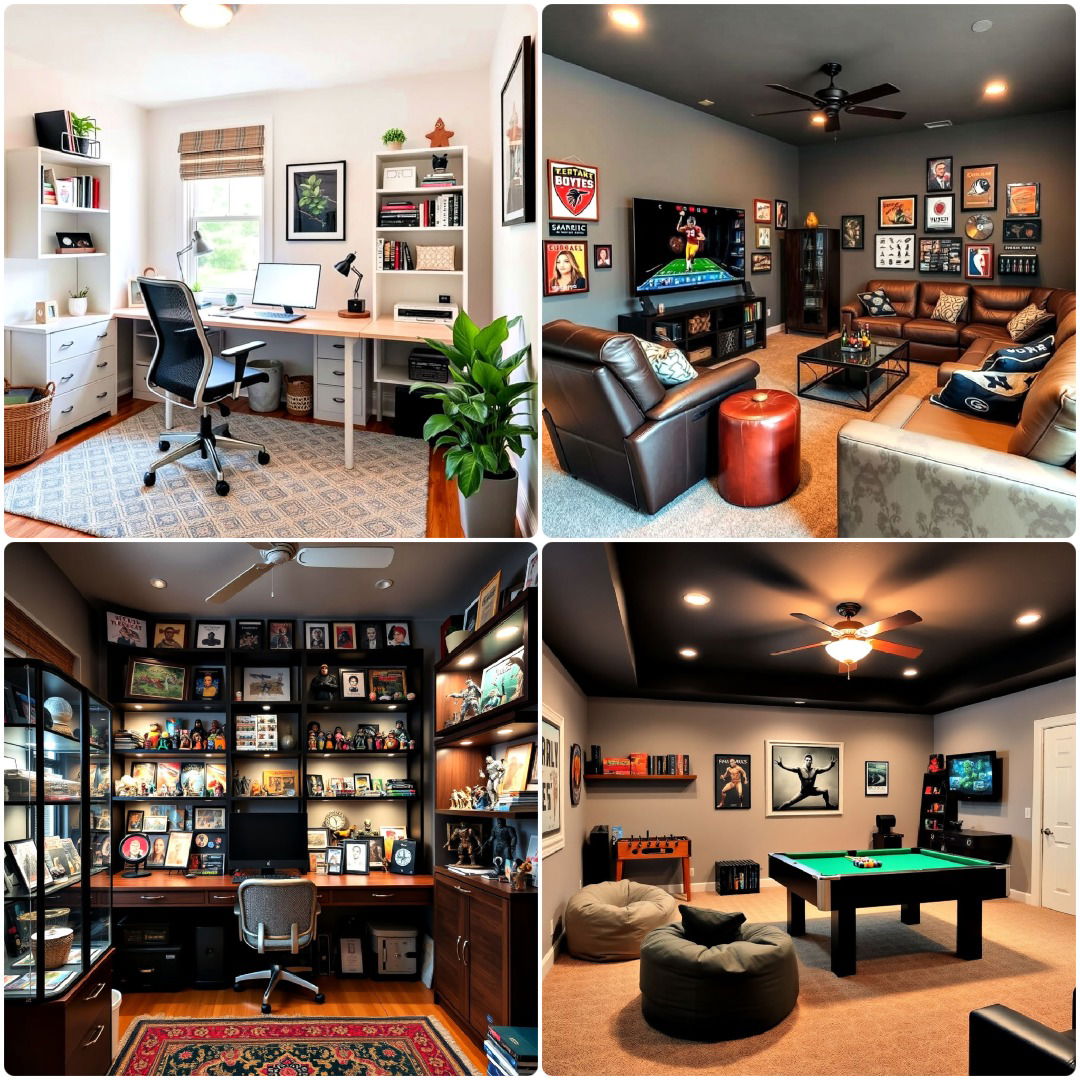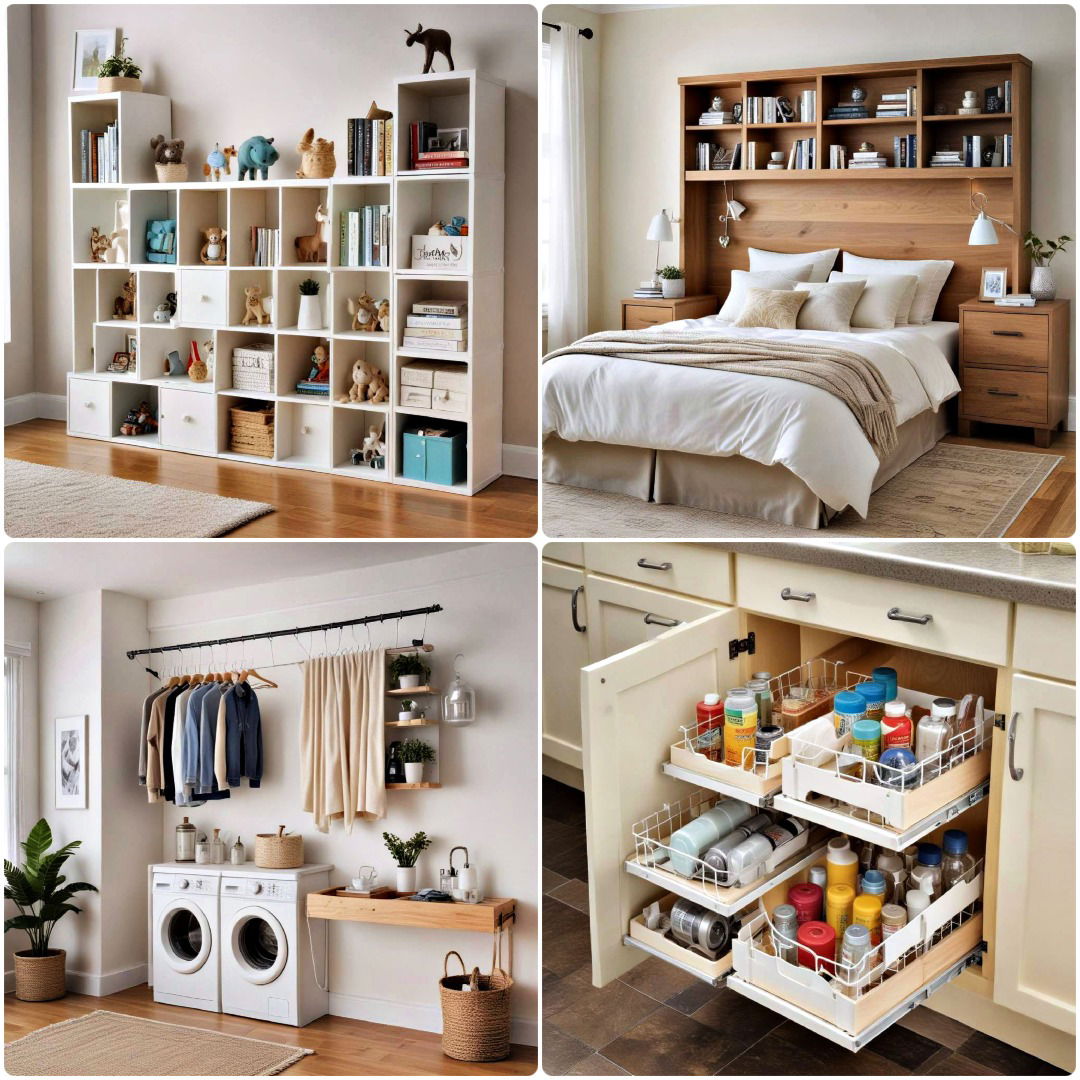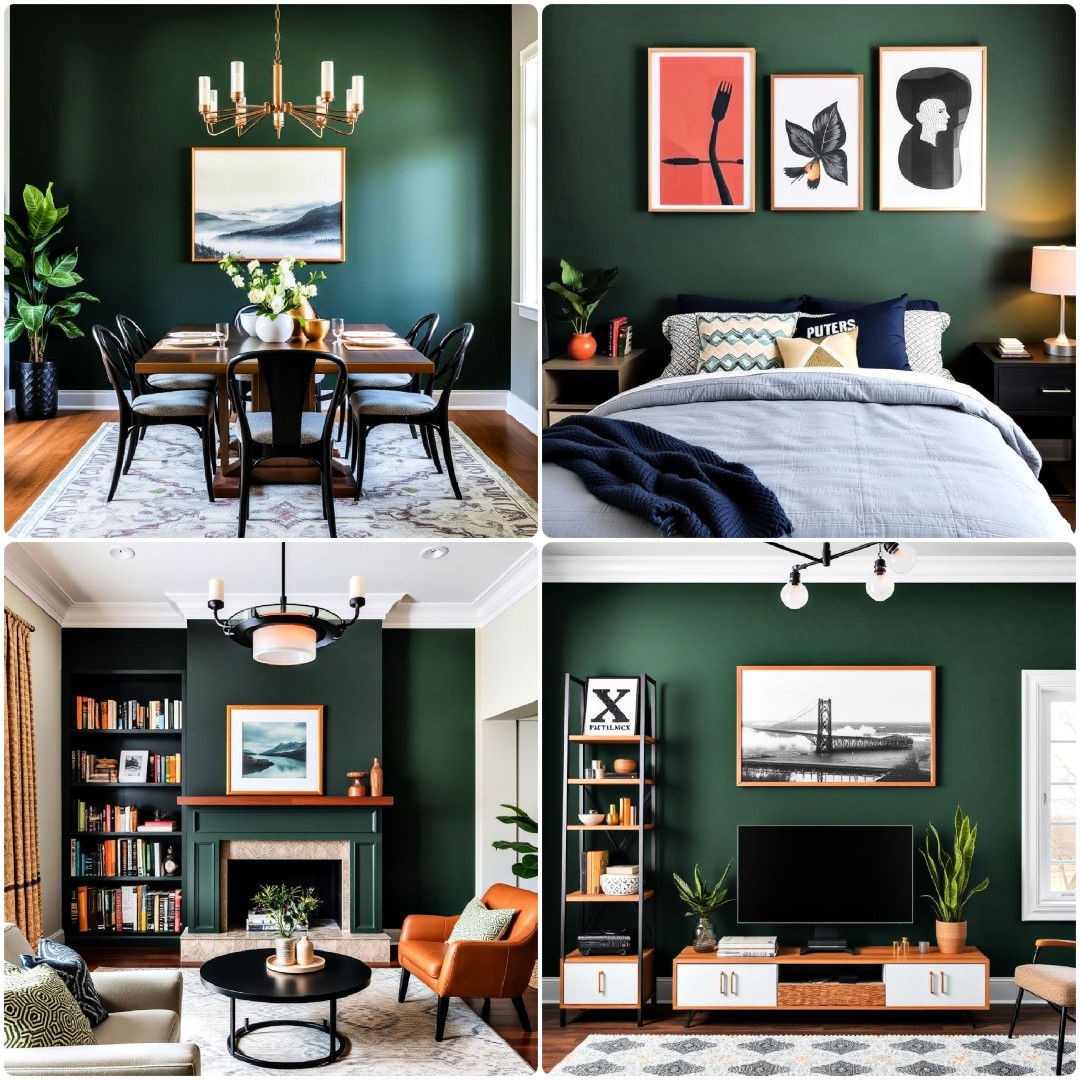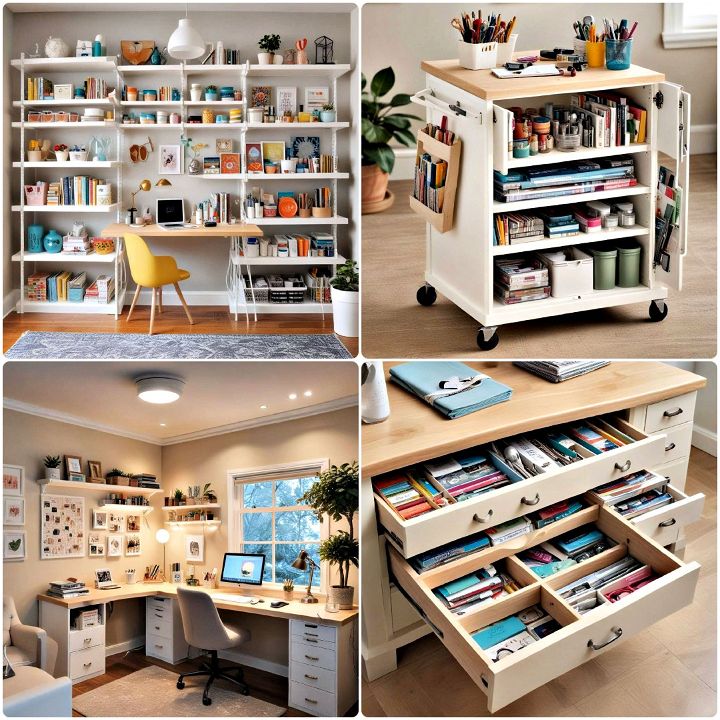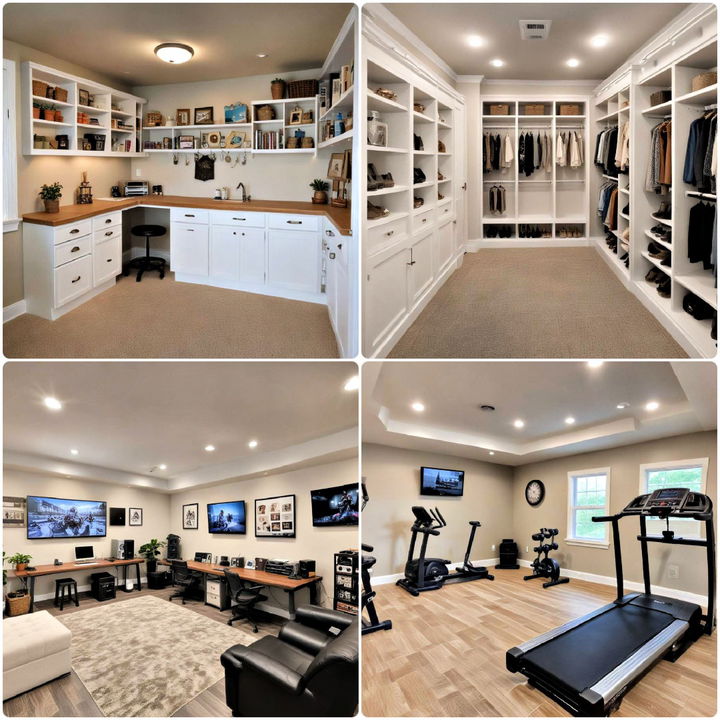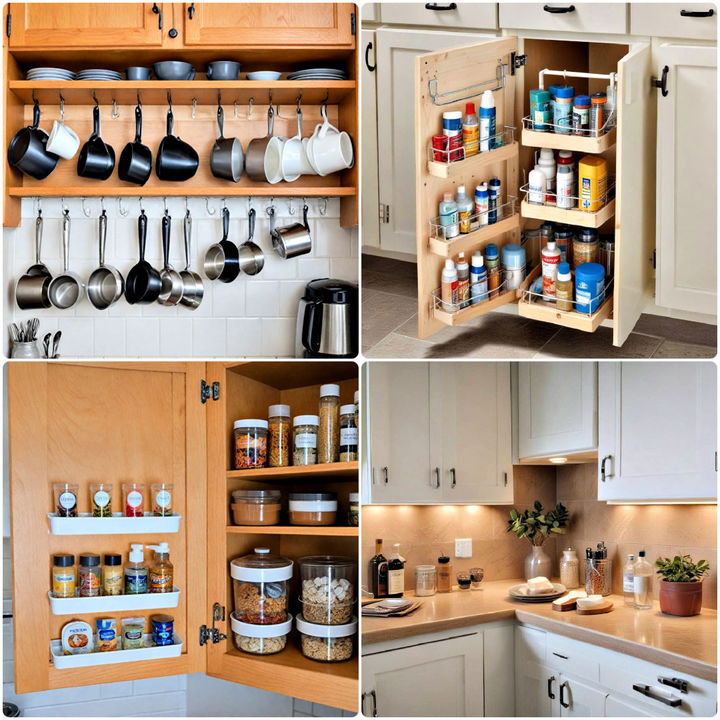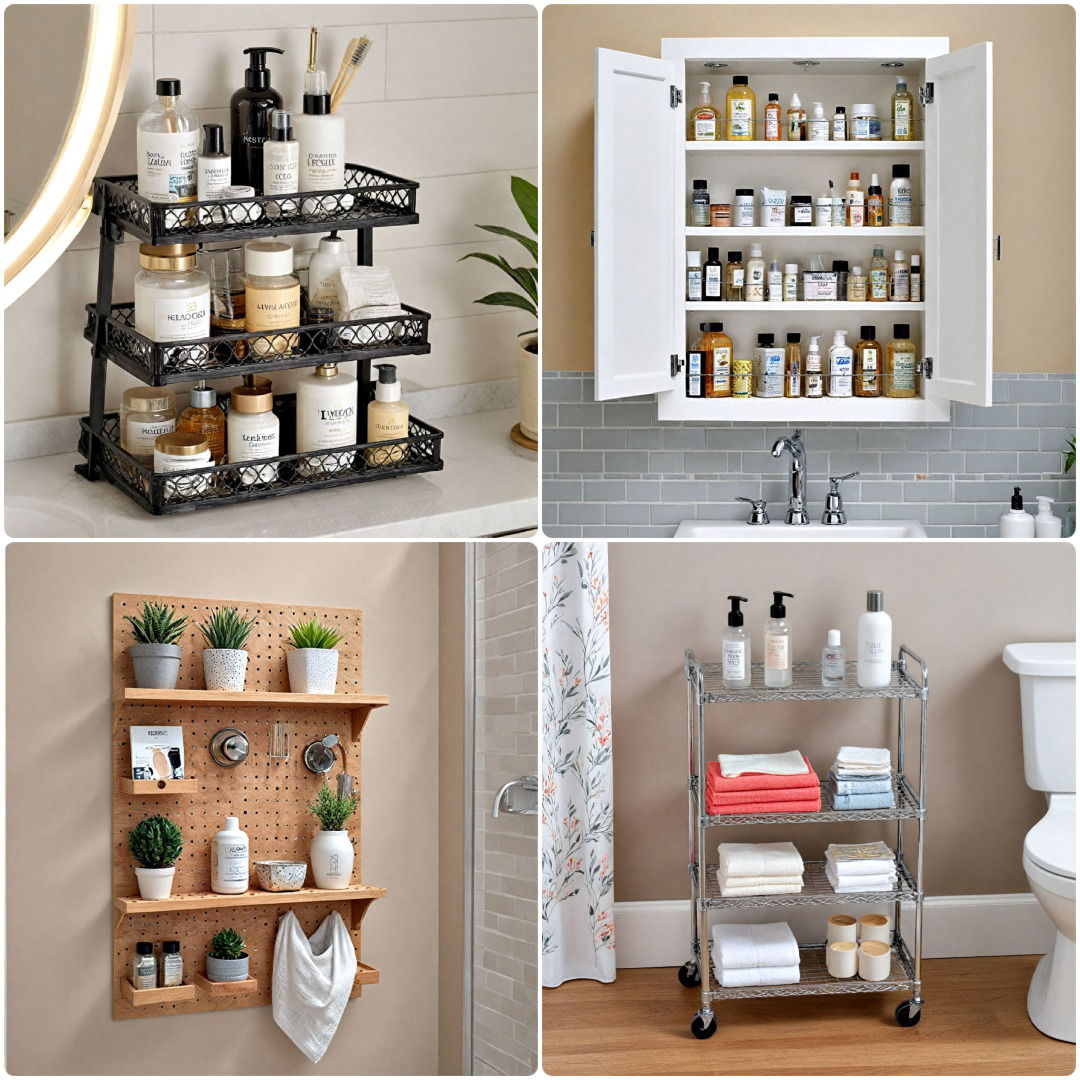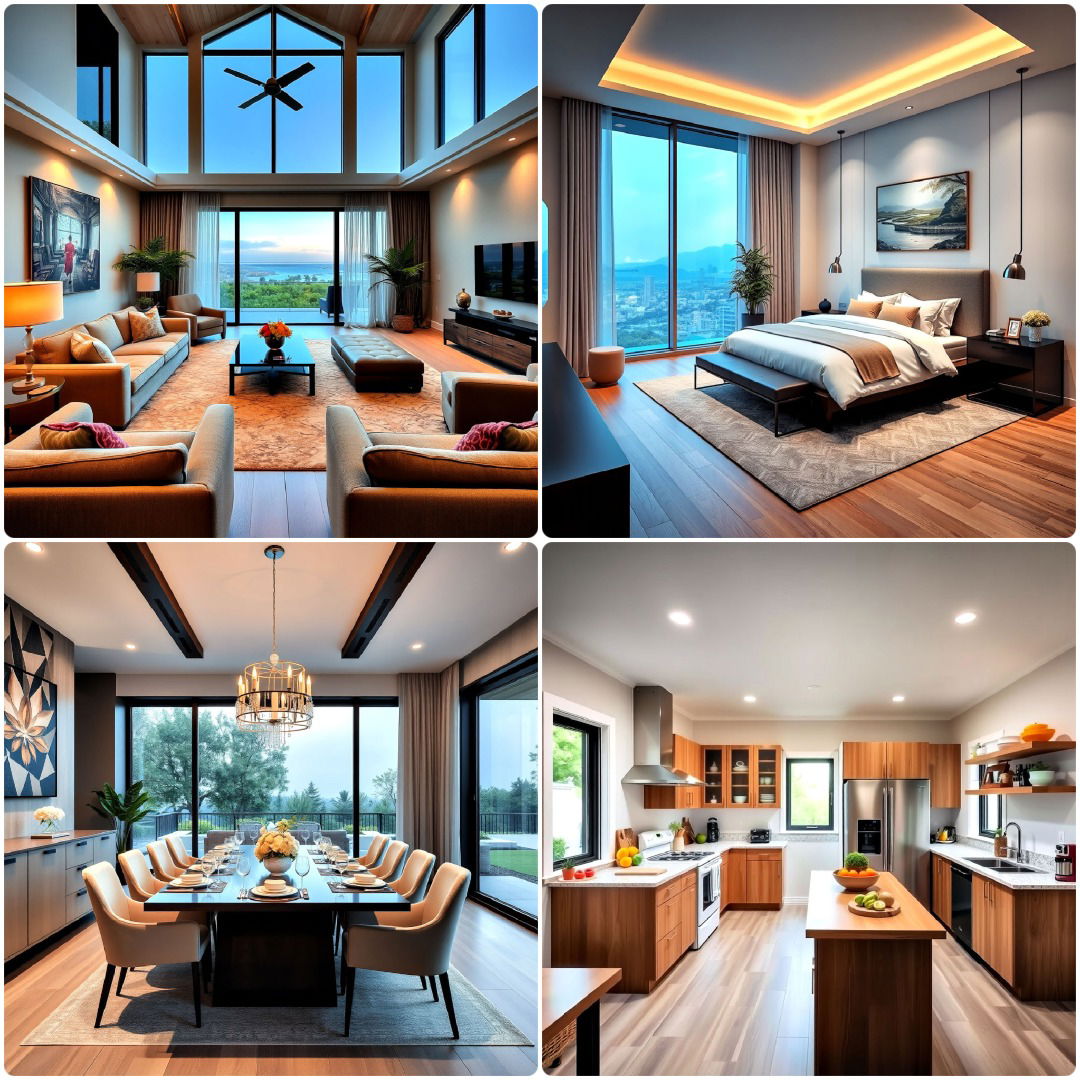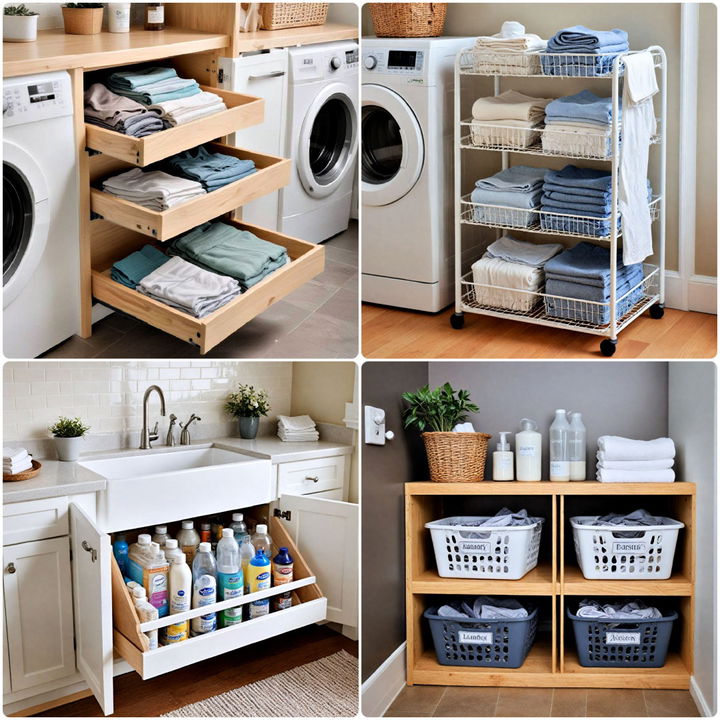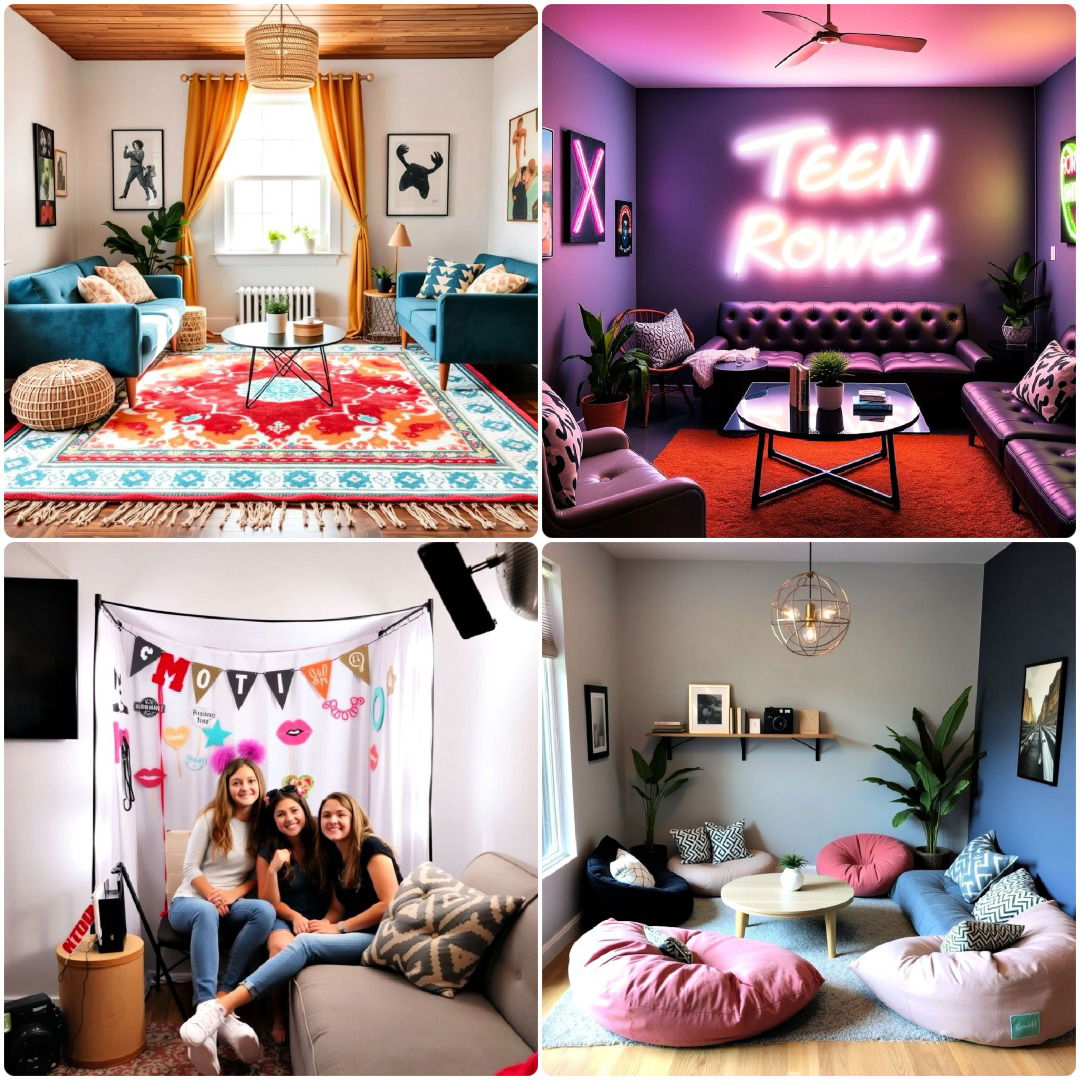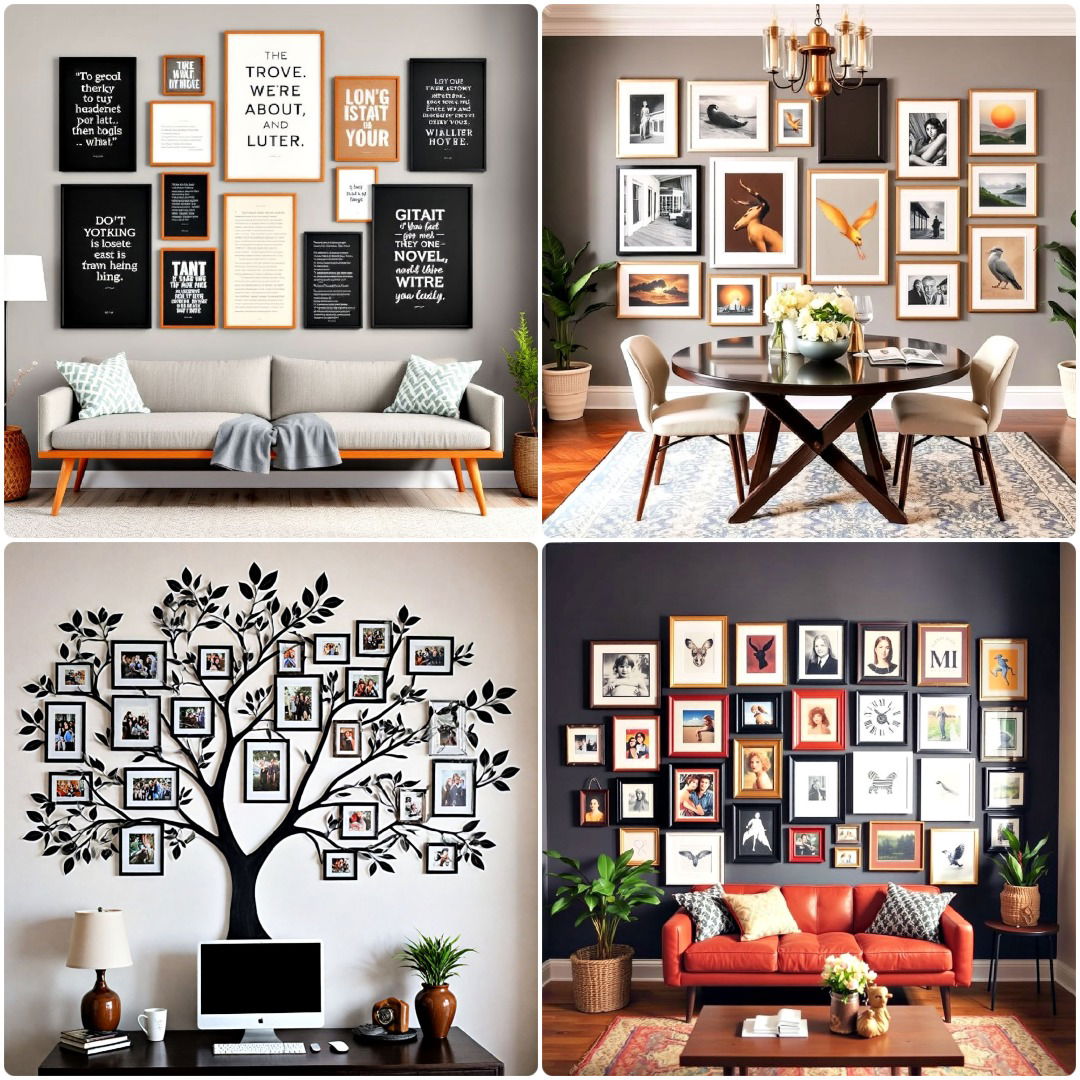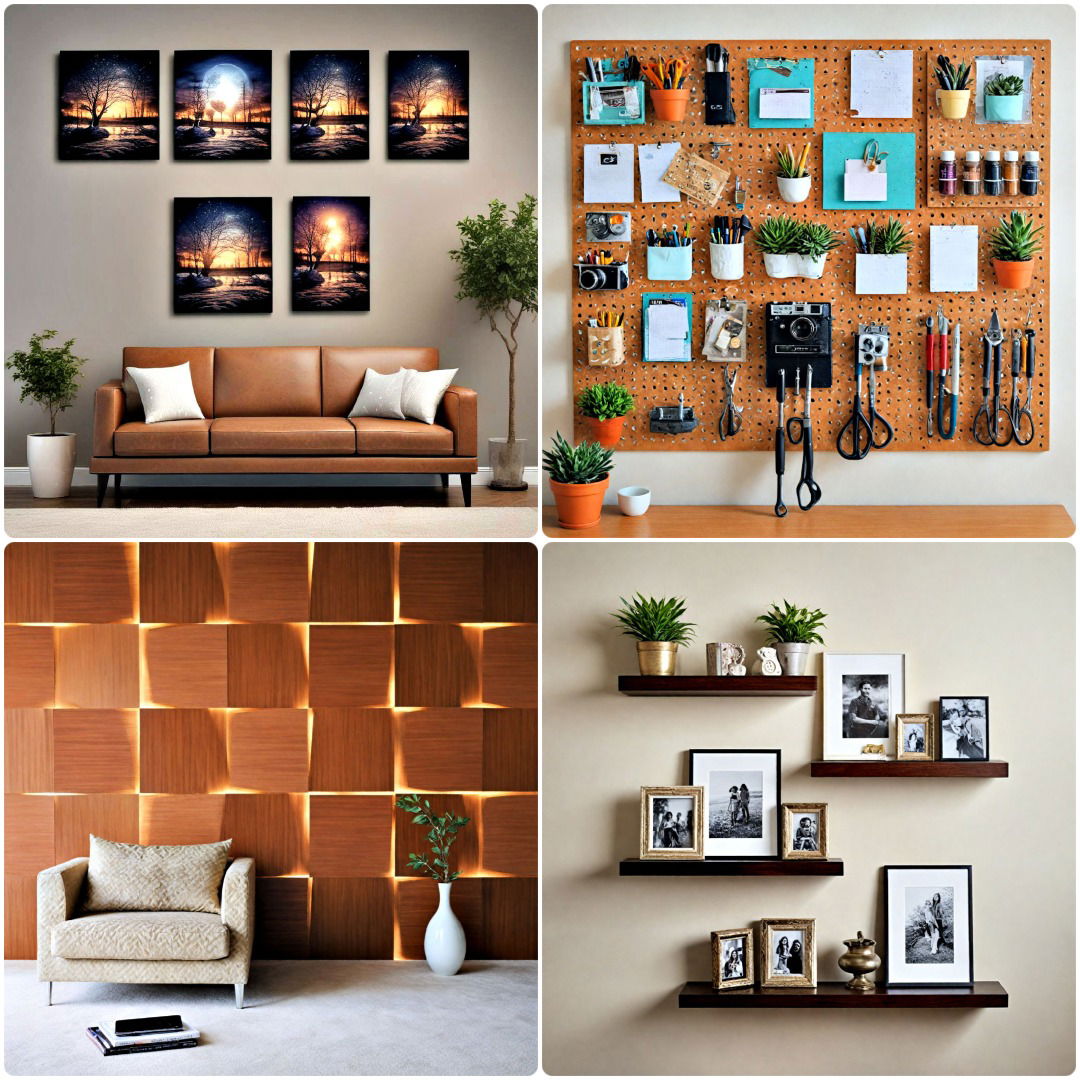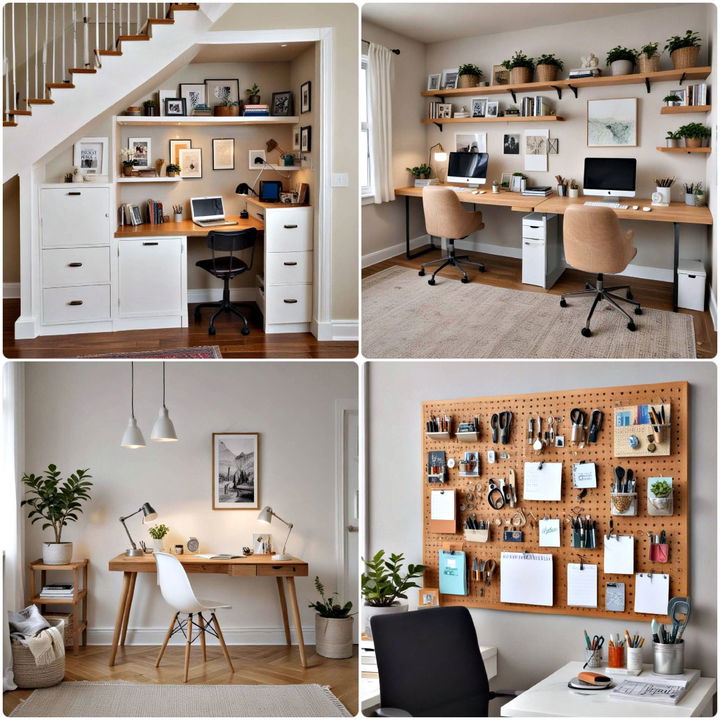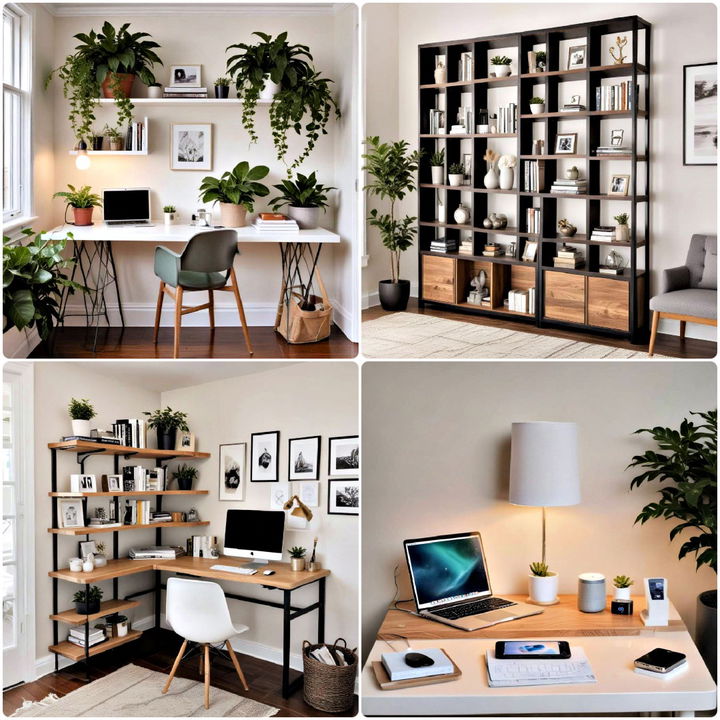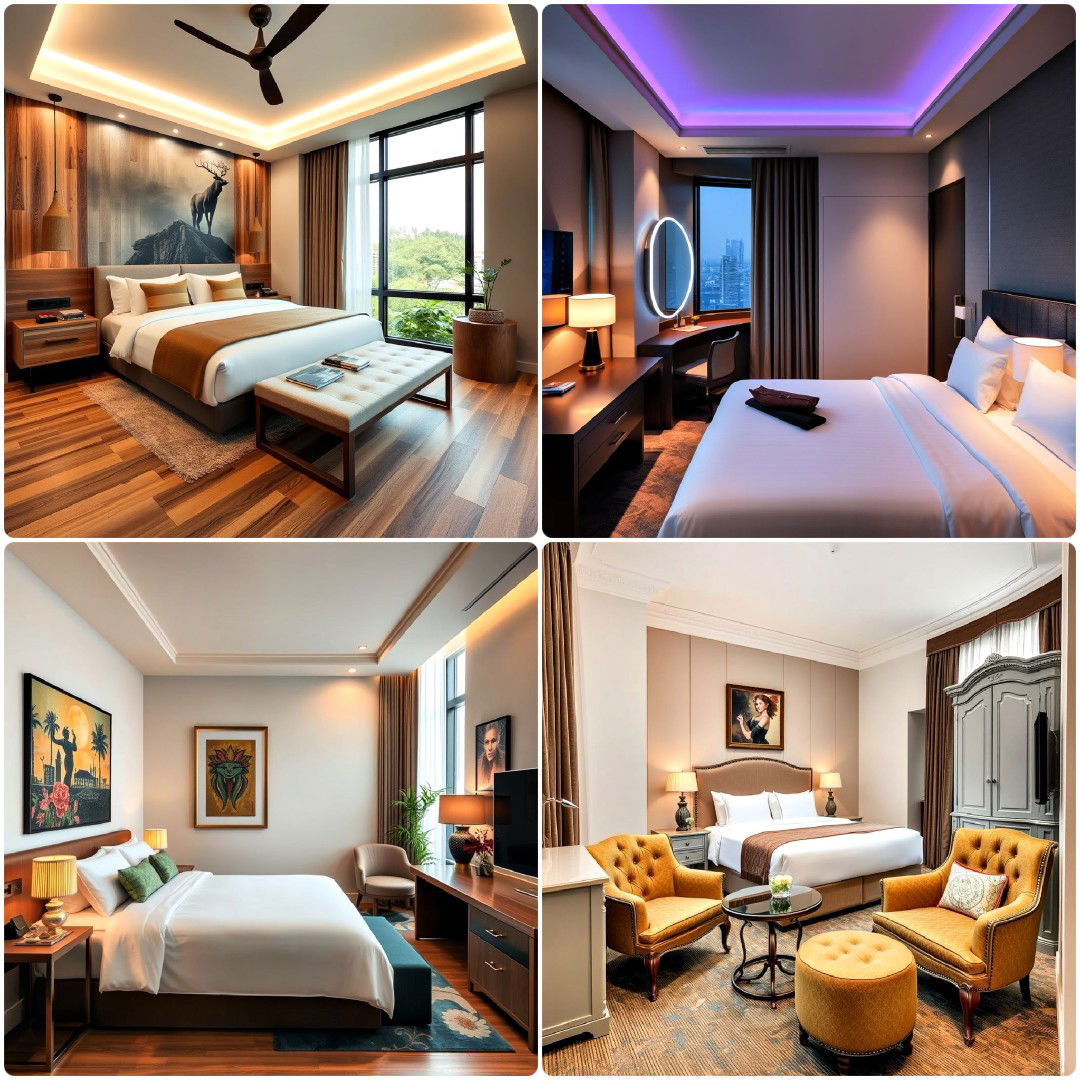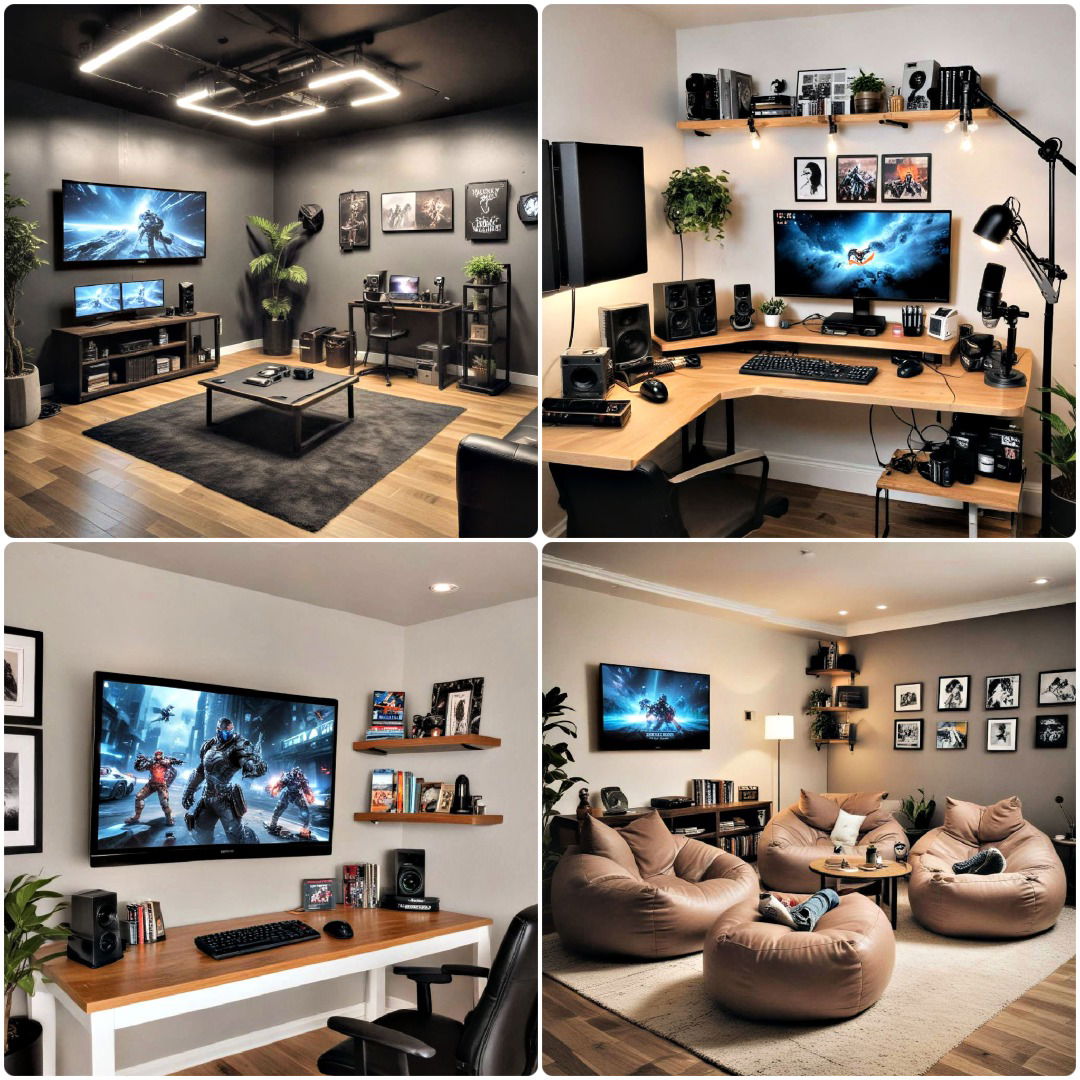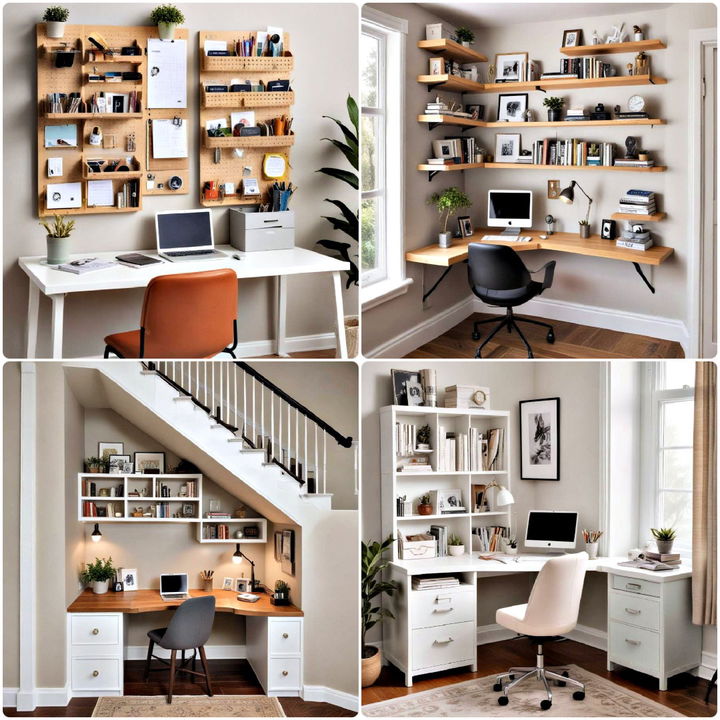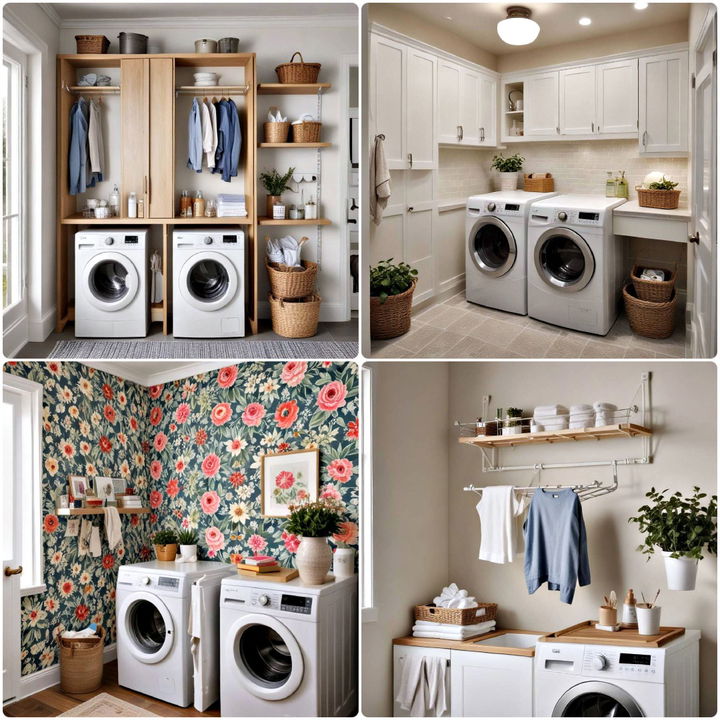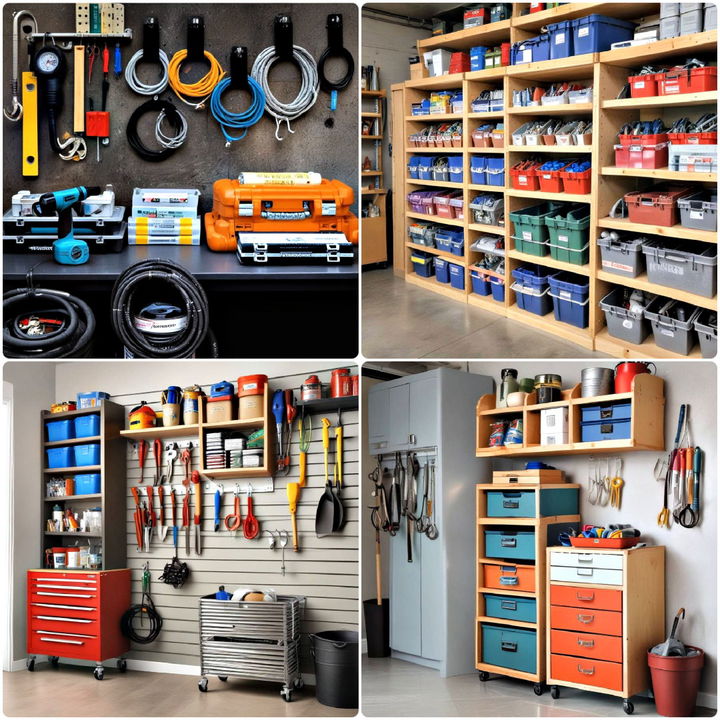An art room is more than just a space—it's a sanctuary for creativity, self-expression, and experimentation. Whether you're a professional artist, a passionate hobbyist, or a parent nurturing your child’s creativity, the right setup can transform your art-making experience. From functional solutions like tool organization and lighting to inspiring touches that ignite the imagination, find these 25 creative art room ideas for your style and budget to ensure every brushstroke and sketch feels effortless.
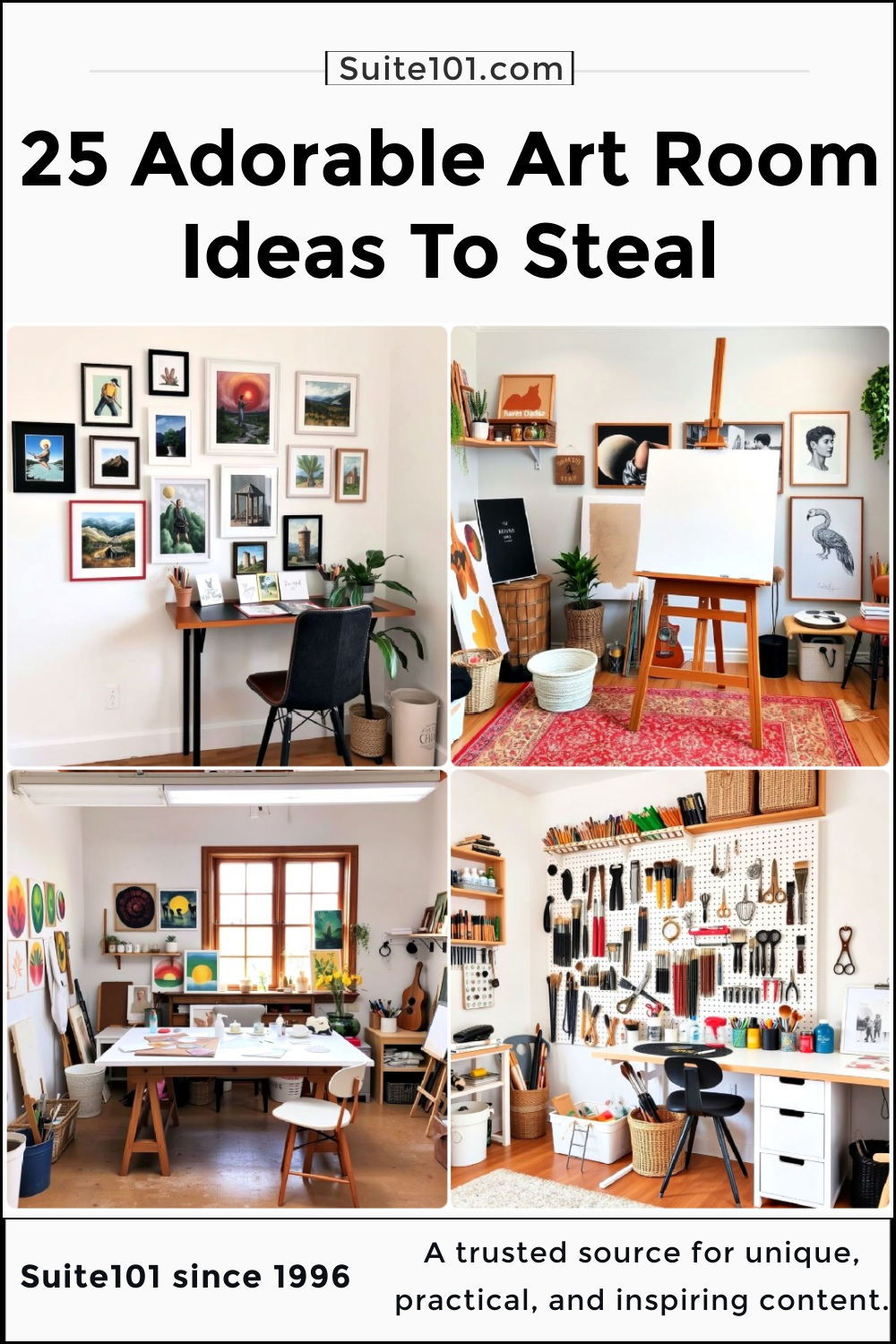
1. Create a Dedicated Art Wall for Display
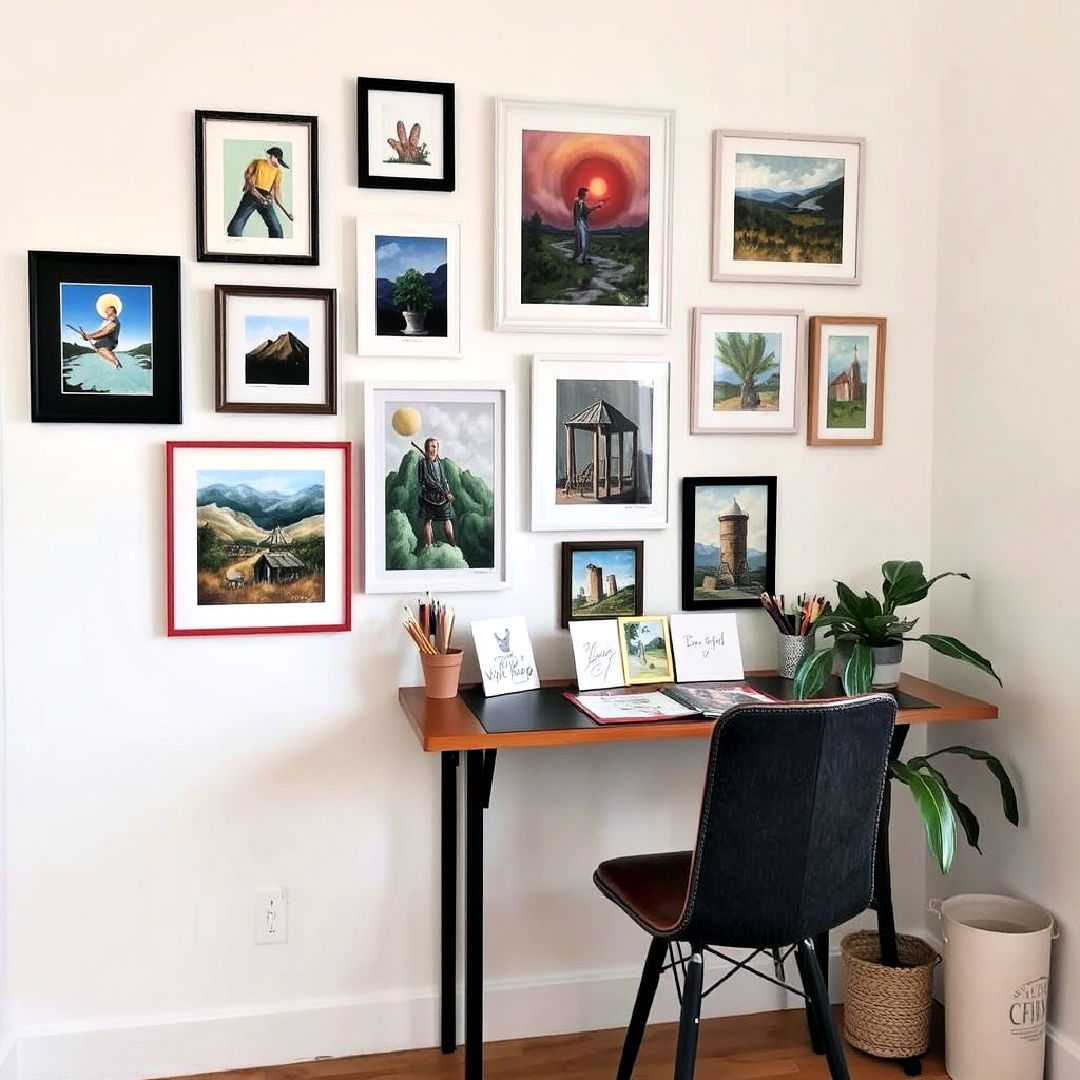
Transform a plain wall into a gallery space where you can showcase your art. This not only boosts inspiration but also makes the room feel more personalized. Frame your favorite pieces or use wire and clips for a flexible display. Rotating your artwork regularly can keep the space fresh and exciting, while allowing you to appreciate your progress over time. It's a perfect way to stay motivated and proud of your creative journey.
2. Install Adjustable Lighting for Optimal Creativity
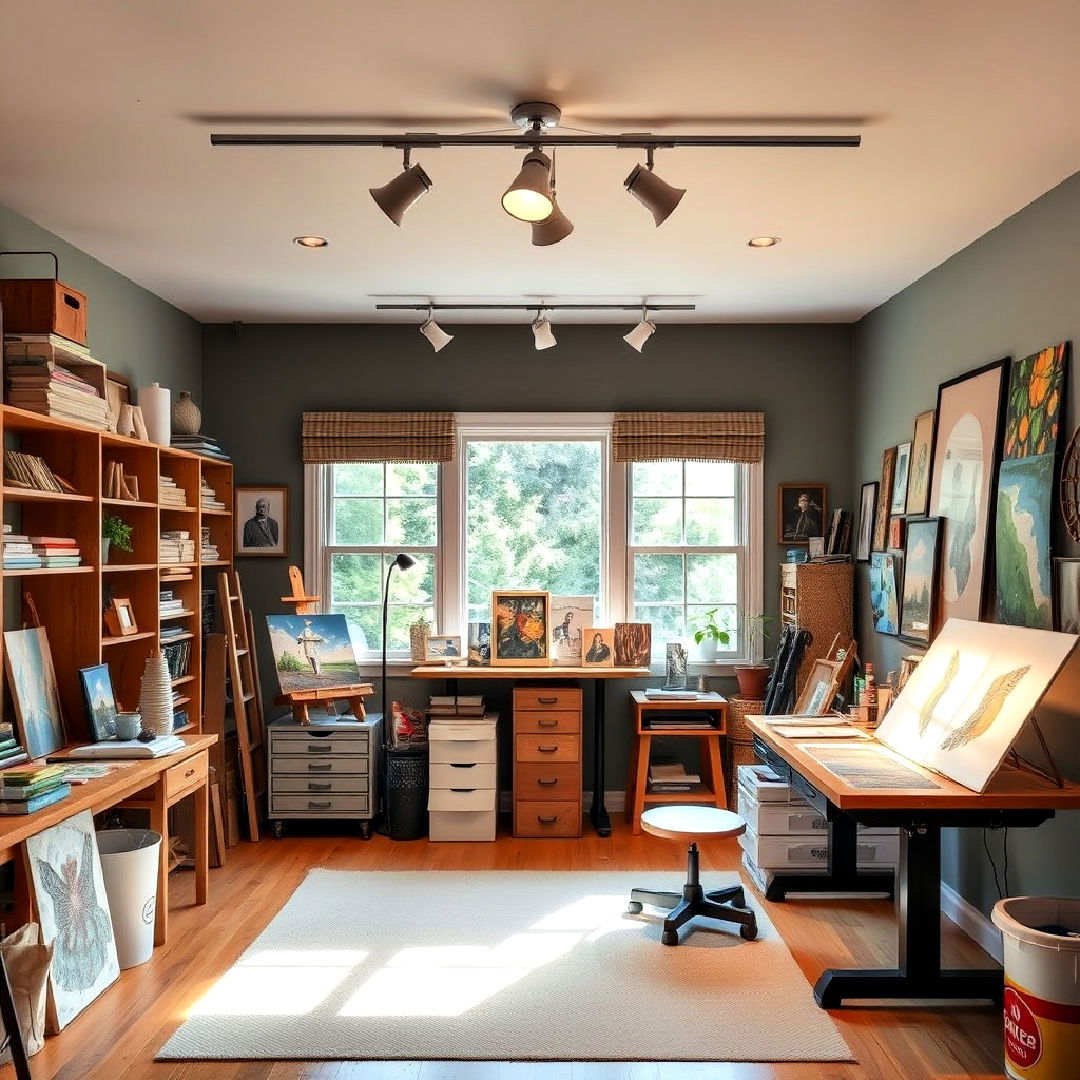
Good lighting is essential in any art room, as it can greatly influence how you see colors and details. Installing adjustable lighting, like a combination of natural daylight lamps and overhead track lights, ensures that your work area is always properly illuminated. This flexibility allows you to focus on intricate tasks or create ambiance when you're experimenting with different moods and styles in your art.
3. Use Pegboards for Tool Organization
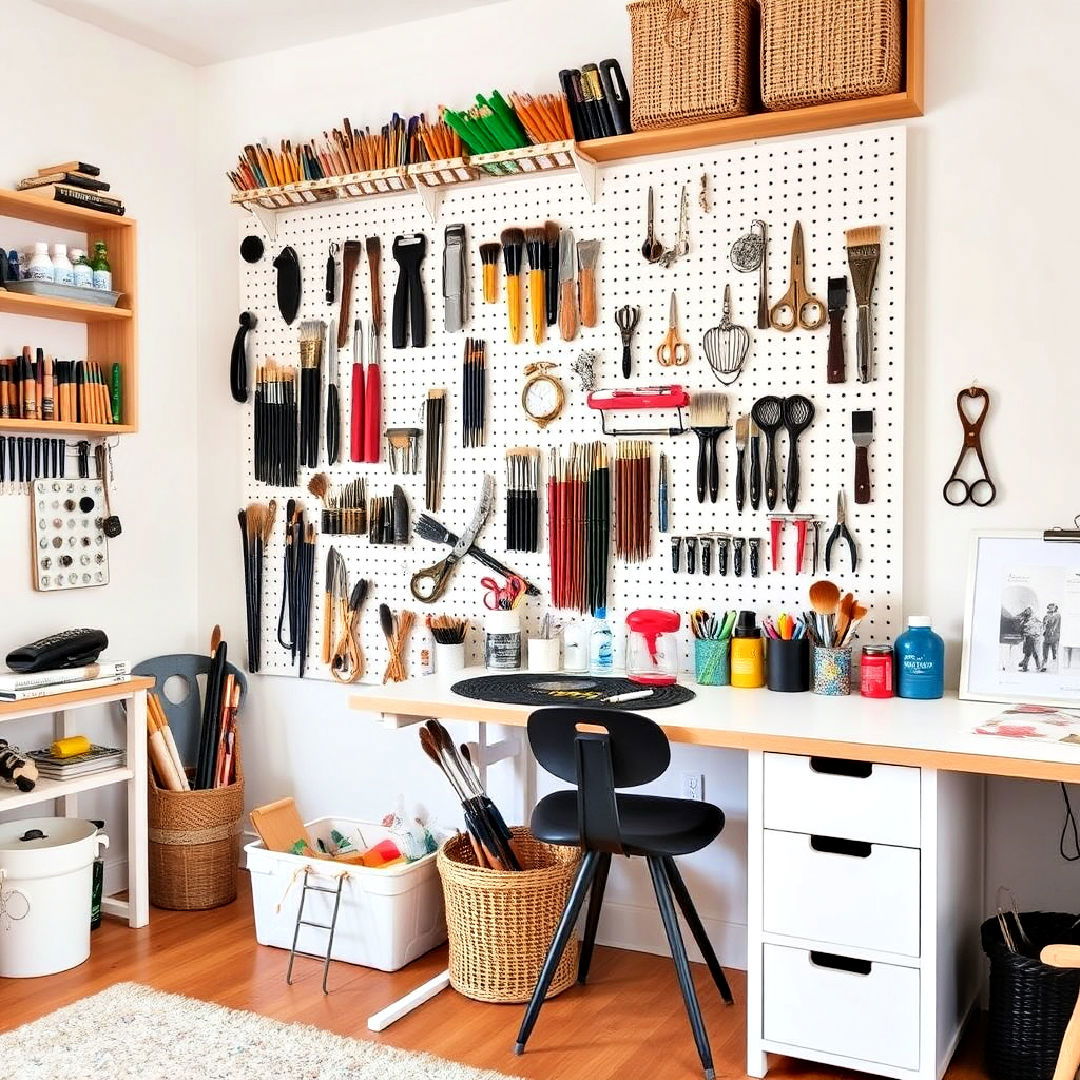
Get inspired with creative art room ideas to spark your imagination and creativity. Keeping your art tools organized and within reach is a game-changer for efficiency. A pegboard can be mounted on the wall, providing a flexible and customizable way to store brushes, paints, scissors, and other materials. You can easily rearrange hooks and holders to accommodate new tools as your collection grows, ensuring that your workspace remains functional and clutter-free.
4. Incorporate a Versatile Work Table

A sturdy, multi-purpose work table is essential for any art room. Opt for a table that can handle various mediums, from painting to sculpting. Look for adjustable or collapsible tables if space is a concern, allowing you to easily switch between large and small projects. The surface should be easy to clean, durable, and big enough to spread out your supplies while working comfortably.
5. Add a Sink for Easy Clean-Up
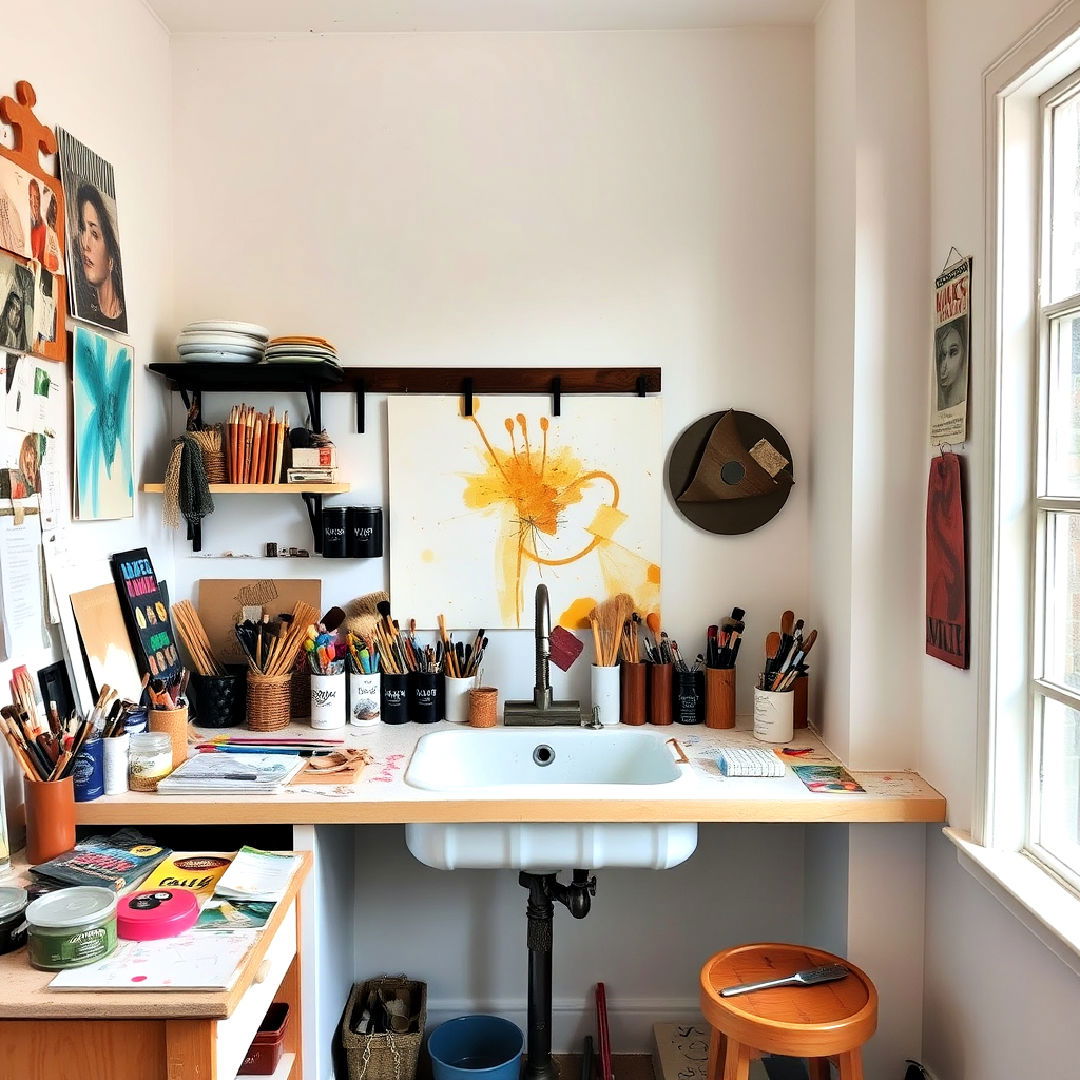
Incorporating a sink into your art room is incredibly practical, especially if you work with messy materials like paints, clays, or dyes. A sink allows you to clean brushes and tools immediately, preventing damage or stains from setting in. It also encourages a habit of tidying up regularly, which can help maintain a more organized and efficient workspace.
6. Design a Color-Coded Storage System

Organizing art supplies by color can make it easier to find exactly what you need and add a fun, creative touch to the room. Use labeled bins, drawers, or shelves to store materials like paints, markers, or paper, grouped by color. This method not only keeps your space organized but also serves as a source of inspiration, as you’re surrounded by a visually appealing system of vibrant hues.
7. Install Shelving for Vertical Storage
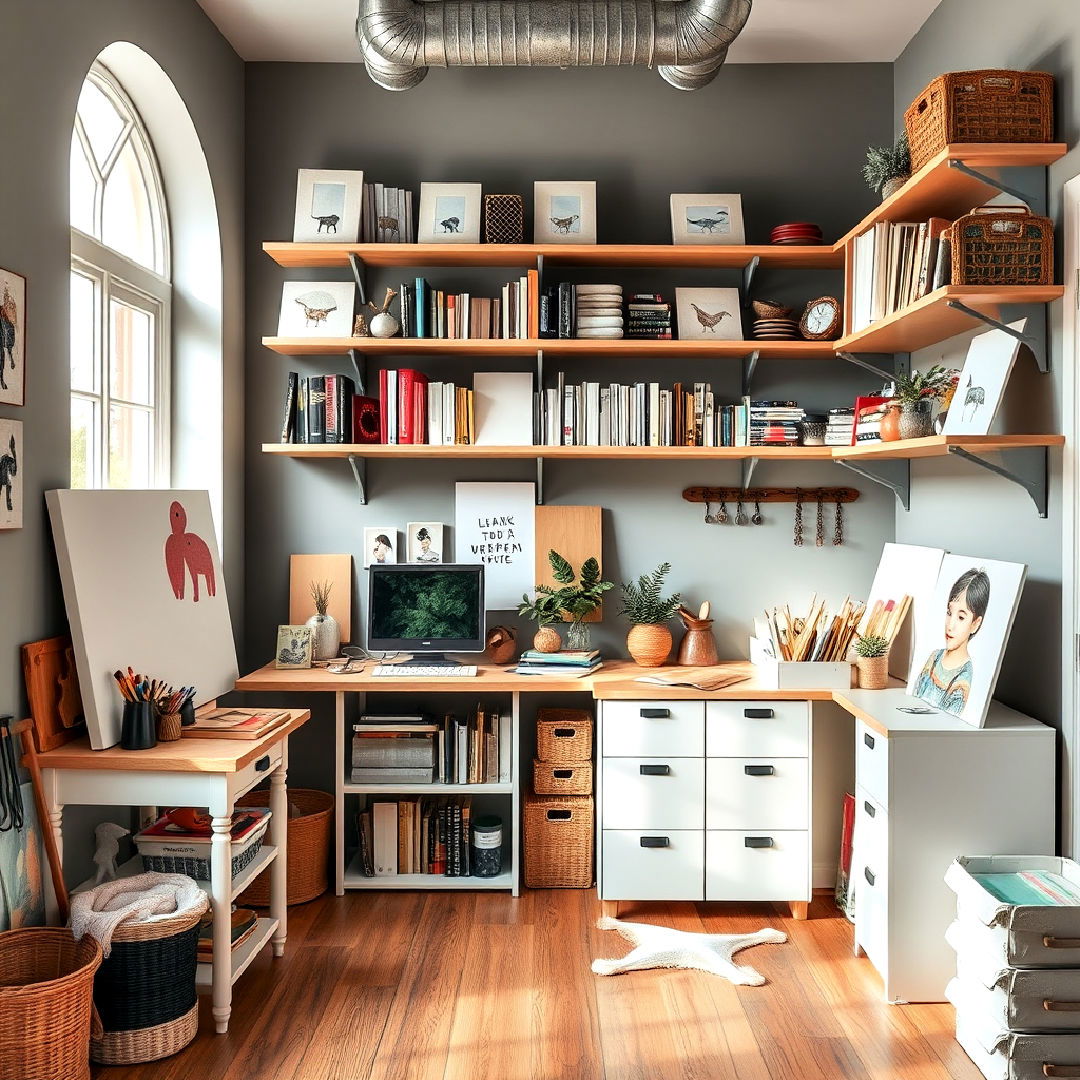
Maximize your art room’s potential by installing shelves along the walls. This allows you to store canvases, sketchbooks, and supplies without cluttering your workspace. Vertical storage is especially useful in small spaces, keeping the floor area free for larger projects. Customize the shelving height to accommodate everything from small jars of paint to larger bins of fabric or paper.
8. Use a Rolling Cart for Mobile Supplies
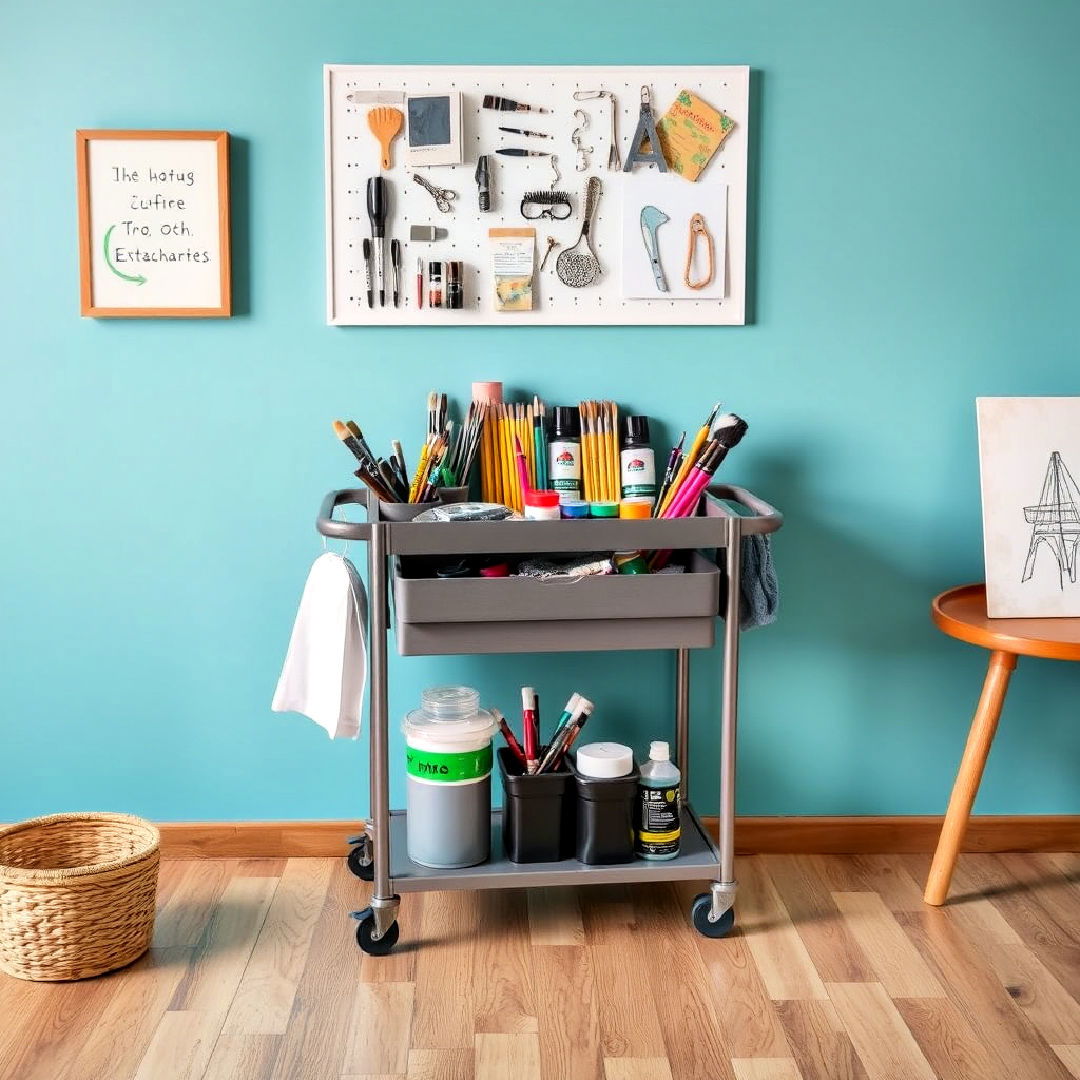
Explore practical art room ideas for home to design your perfect creative space. A rolling cart provides flexibility in your art room by allowing you to keep frequently used supplies close at hand. Stock it with essential tools like brushes, pencils, paints, and cleaning supplies, and roll it to wherever you’re working. When you’re done, it can easily be tucked away to save space, making it an ideal solution for a multi-functional art room.
9. Add a Bulletin Board for Inspiration
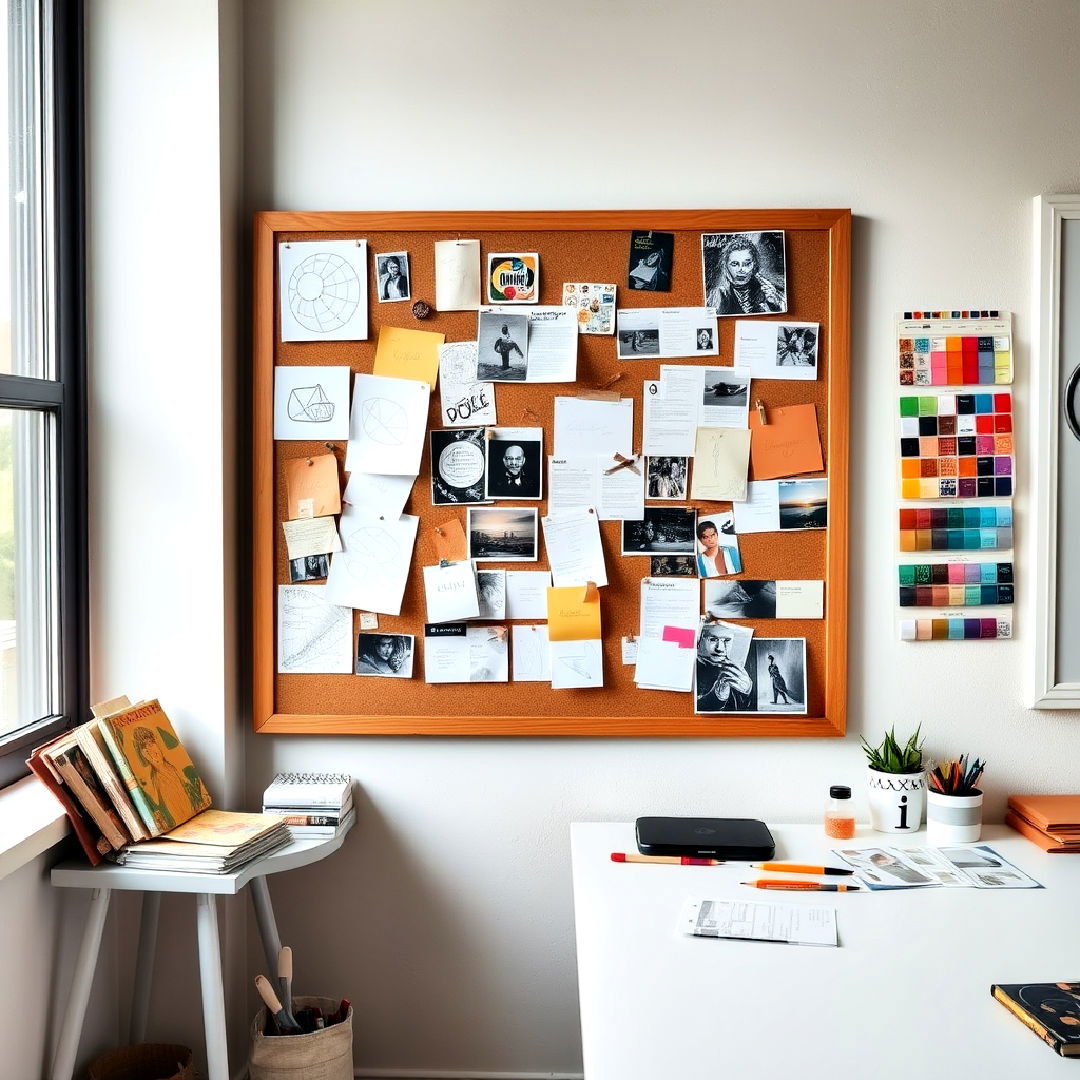
A bulletin board is a great way to keep track of ideas, references, and inspiration. Pin up sketches, magazine clippings, or color swatches that inspire your current or future projects. It also helps you keep track of deadlines, project goals, or ongoing work. Regularly updating your board with fresh ideas keeps your creativity flowing and ensures you stay organized.
10. Create an Art Supply Station for Kids
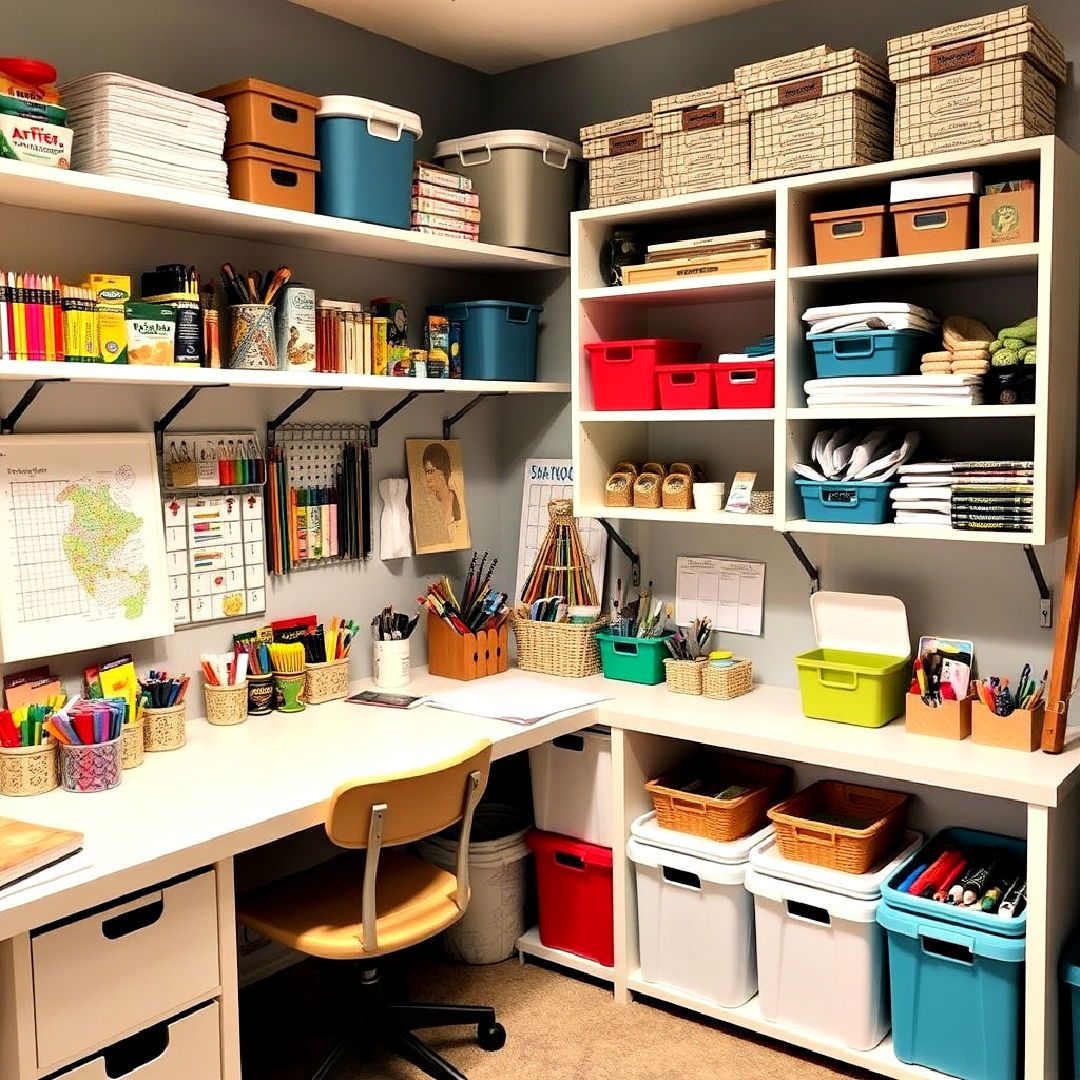
If your art room is shared with younger artists, designating a special area for their supplies can keep the space more organized. Use child-friendly storage options like low shelves or bins to store crayons, markers, and coloring books. This dedicated zone encourages kids to be creative while keeping their materials separate from more advanced supplies, preventing accidents or messes.
11. Install a Chalkboard or Whiteboard Wall
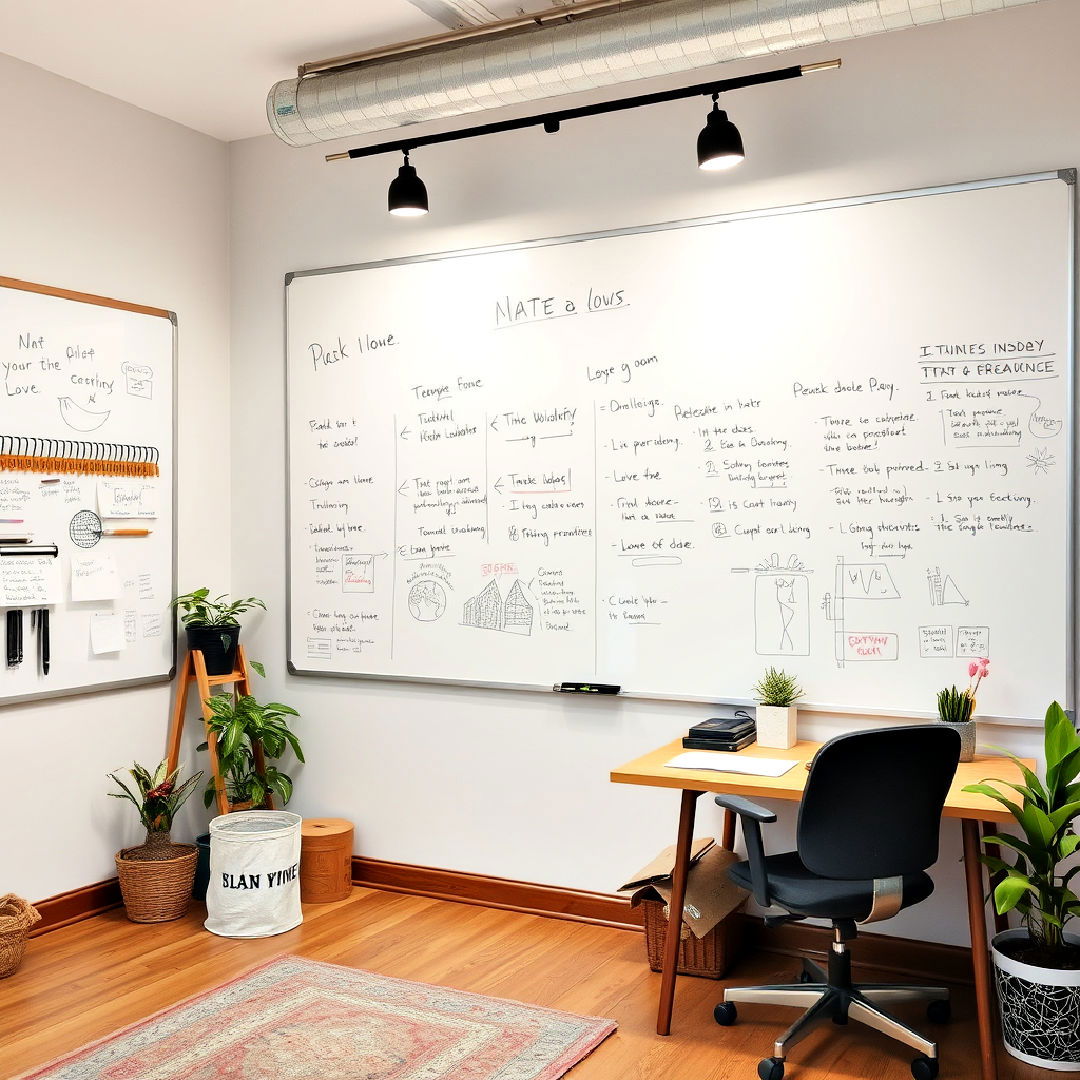
An entire wall dedicated to a chalkboard or whiteboard can be incredibly useful for sketching out ideas or brainstorming. It’s also a perfect spot to write down to-do lists, inspirational quotes, or quick notes as you work. This versatile surface allows for large-scale drawings or plans without the commitment of using paper, making it an eco-friendly option as well.
12. Incorporate Comfortable Seating
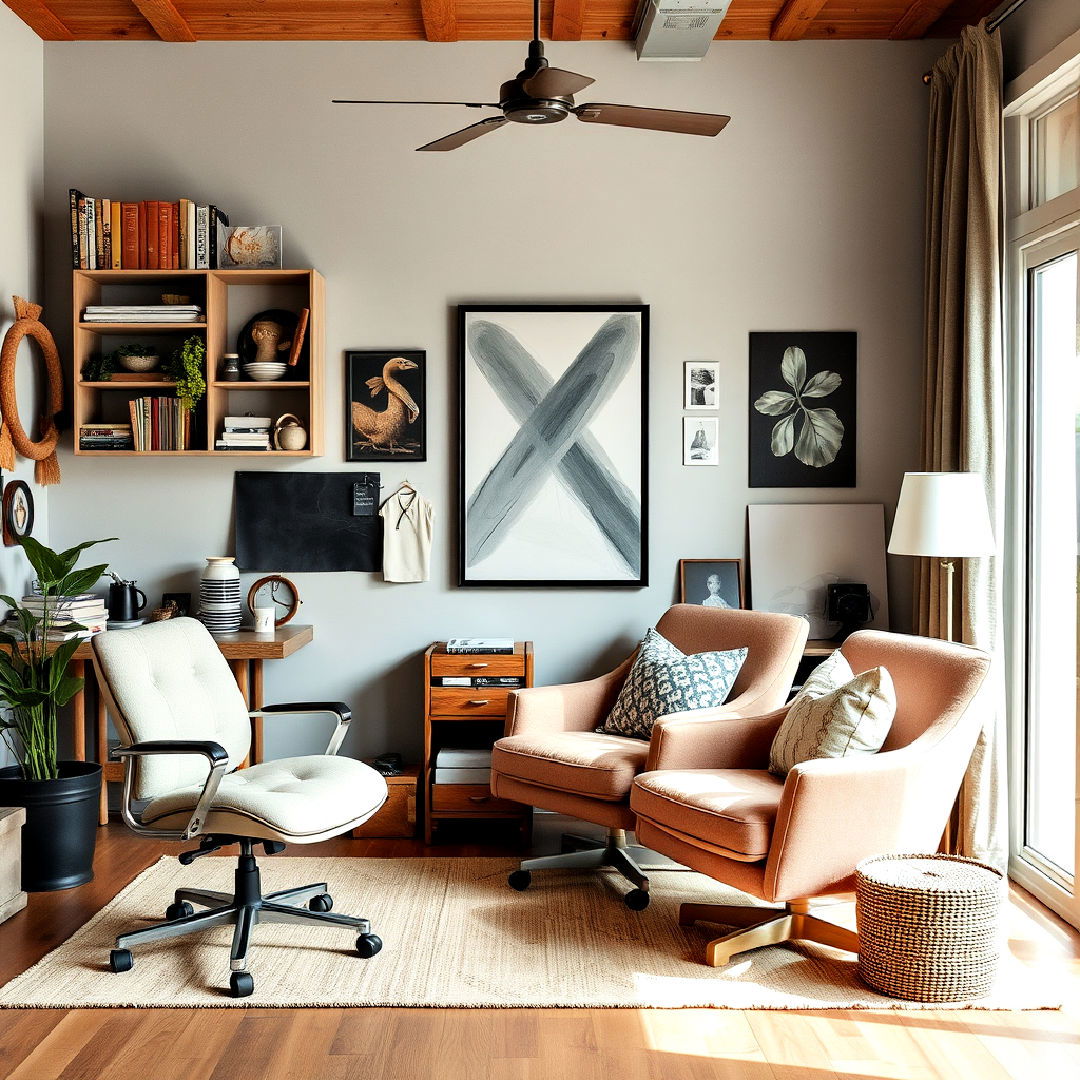
Comfort is key to a productive and enjoyable creative process. Adding comfortable seating like a cushioned chair or a stool with adjustable height allows you to sit for extended periods without strain. If your art room is a space for brainstorming or relaxing, include cozy lounge chairs where you can unwind and think about your next project.
13. Use Glass Jars for Visible Storage
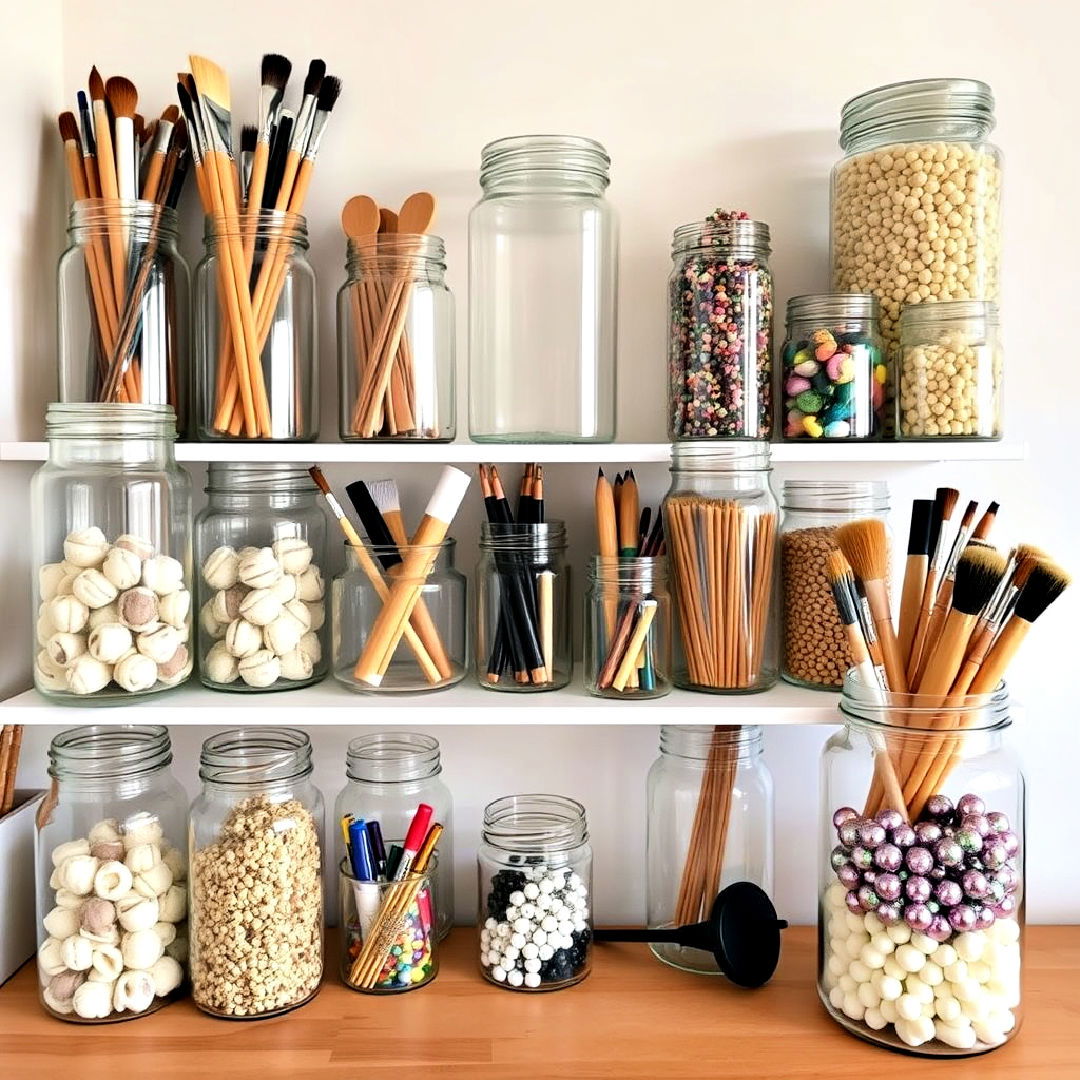
Discover unique artist room ideas for a functional and inspiring studio. Glass jars are a simple yet effective way to store smaller art supplies, like brushes, pens, or beads, while keeping them visible. This allows you to see what you have at a glance, making it easier to find what you need. Plus, glass jars add a touch of elegance and charm to your space, giving it a more polished and organized feel.
14. Create a Separate Space for Drying Artwork

Having a designated area where artwork can dry without being disturbed is essential, especially if you work with paints, glazes, or other wet mediums. Set up a drying rack or use a table with enough space to leave pieces untouched. This prevents accidents and allows you to continue working on other projects while waiting for items to dry.
15. Add a Standing Easel for Large-Scale Work
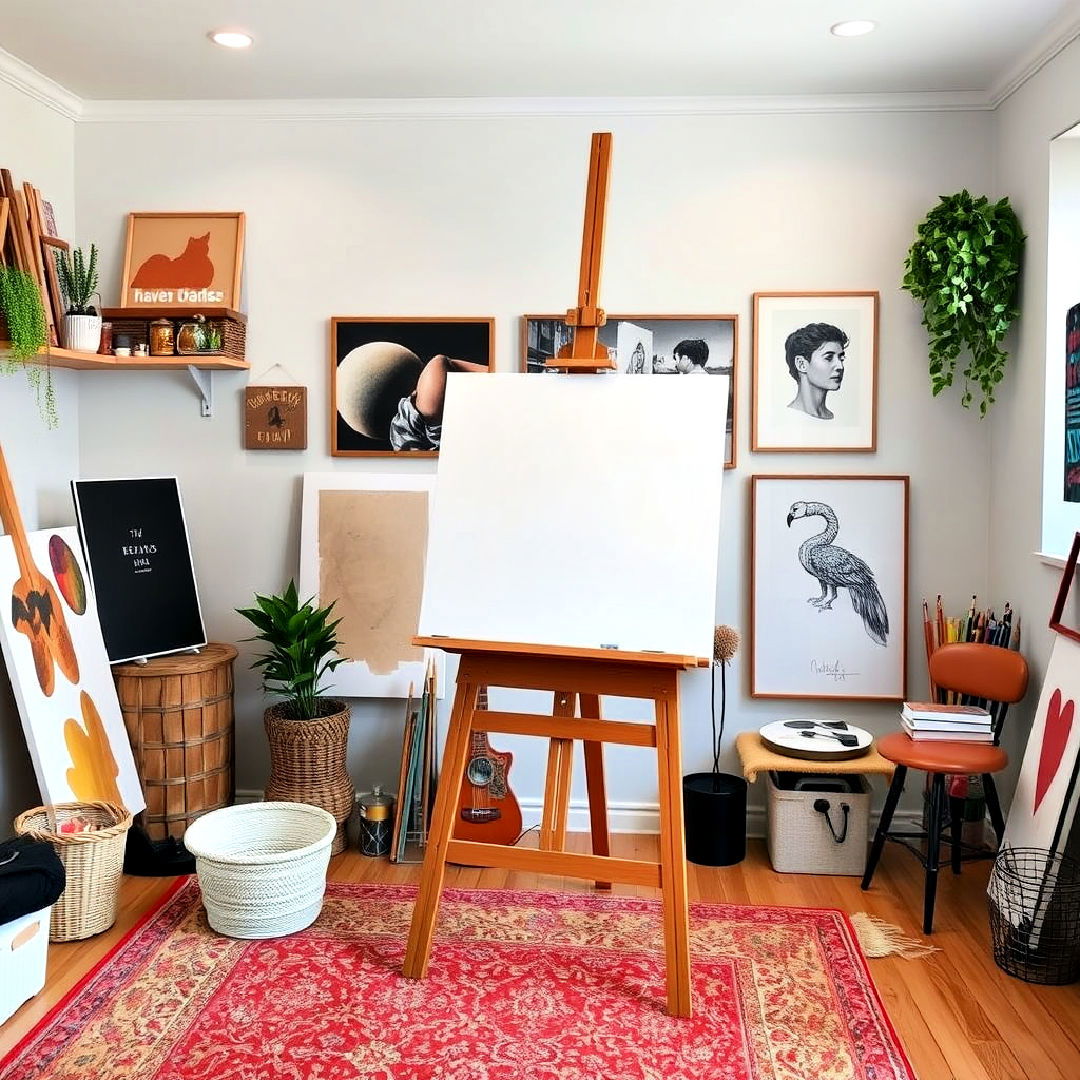
For those who enjoy working on larger canvases, a sturdy standing easel is a must-have. Easels allow you to work upright, offering a different perspective than working flat on a table. They are adjustable to suit different heights and canvas sizes, providing flexibility and comfort while painting or drawing on a bigger scale.
16. Install Floor Mats for Easy Clean-Up
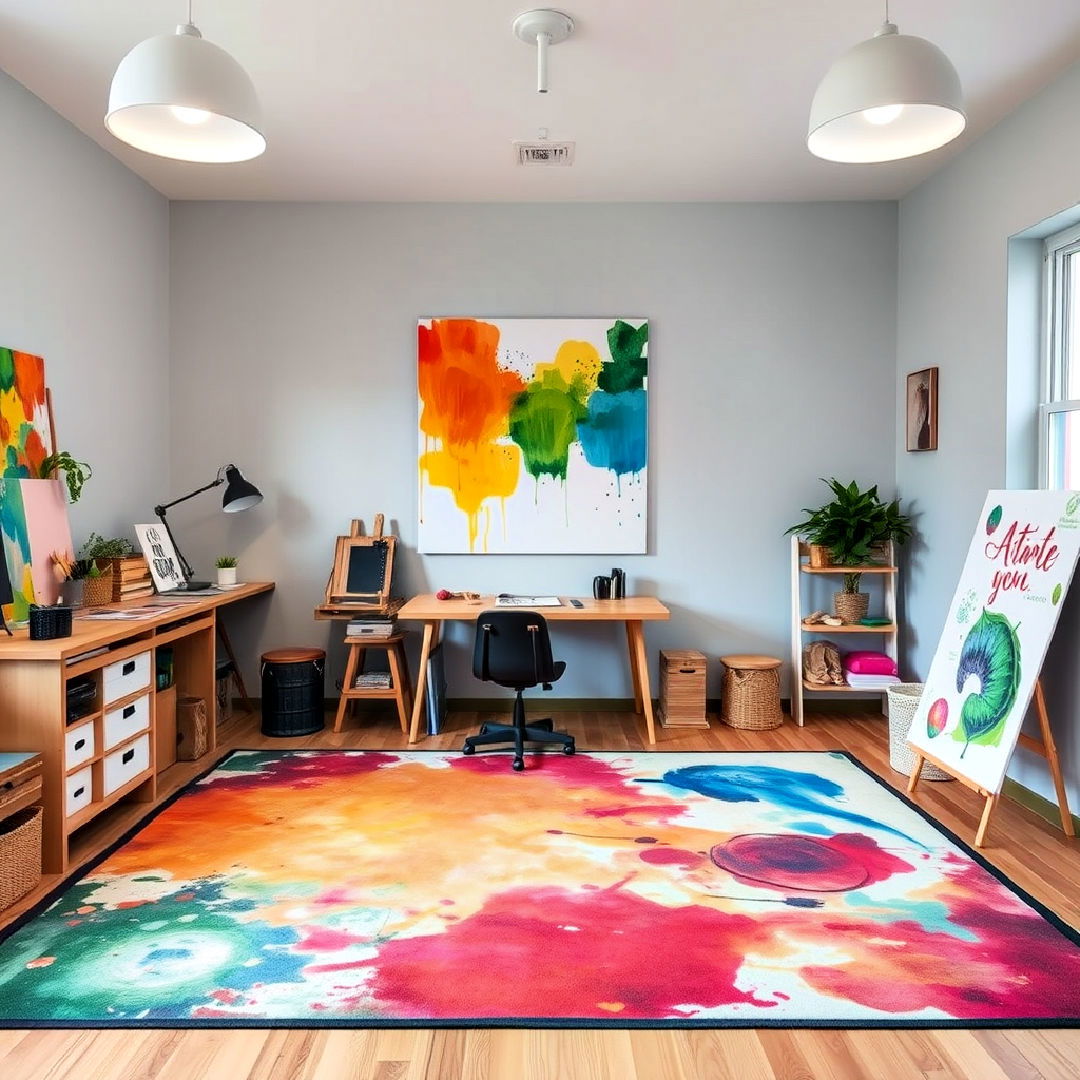
Floor mats or protective coverings are a practical addition to any art room, especially if you work with messy materials. These mats can be easily cleaned or replaced and help protect your flooring from spills, splatters, or scratches. Choose mats that are non-slip and durable, ensuring safety and longevity while you work.
17. Incorporate Natural Light with Large Windows
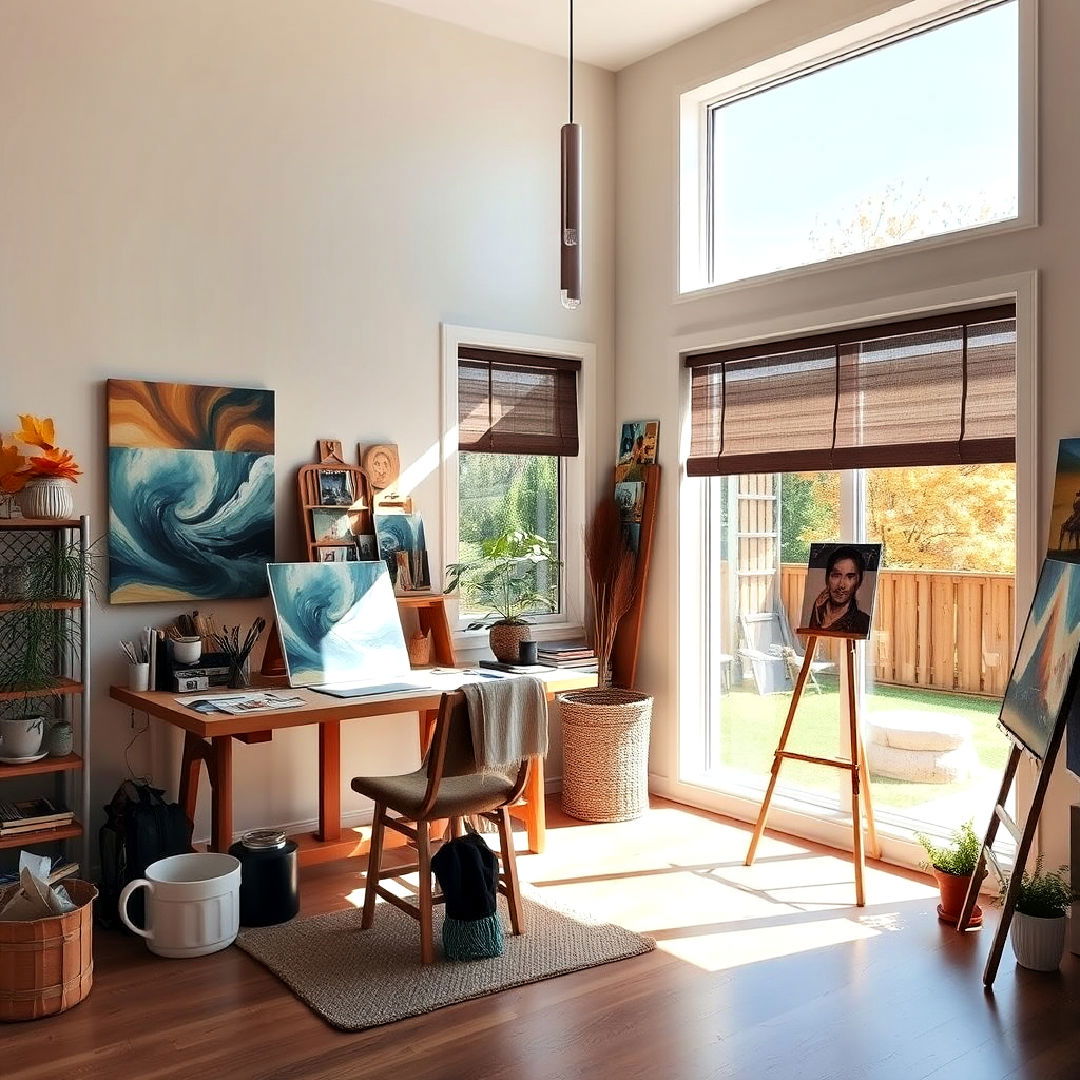
Natural light is crucial for accurately seeing colors and details in your artwork. If possible, situate your art room near large windows or consider adding skylights to flood the space with sunlight. Natural light not only enhances your creativity but also makes the room feel more open and inviting. Supplement it with adjustable blinds or curtains to control the light during different times of the day.
18. Use Drawer Organizers for Small Supplies
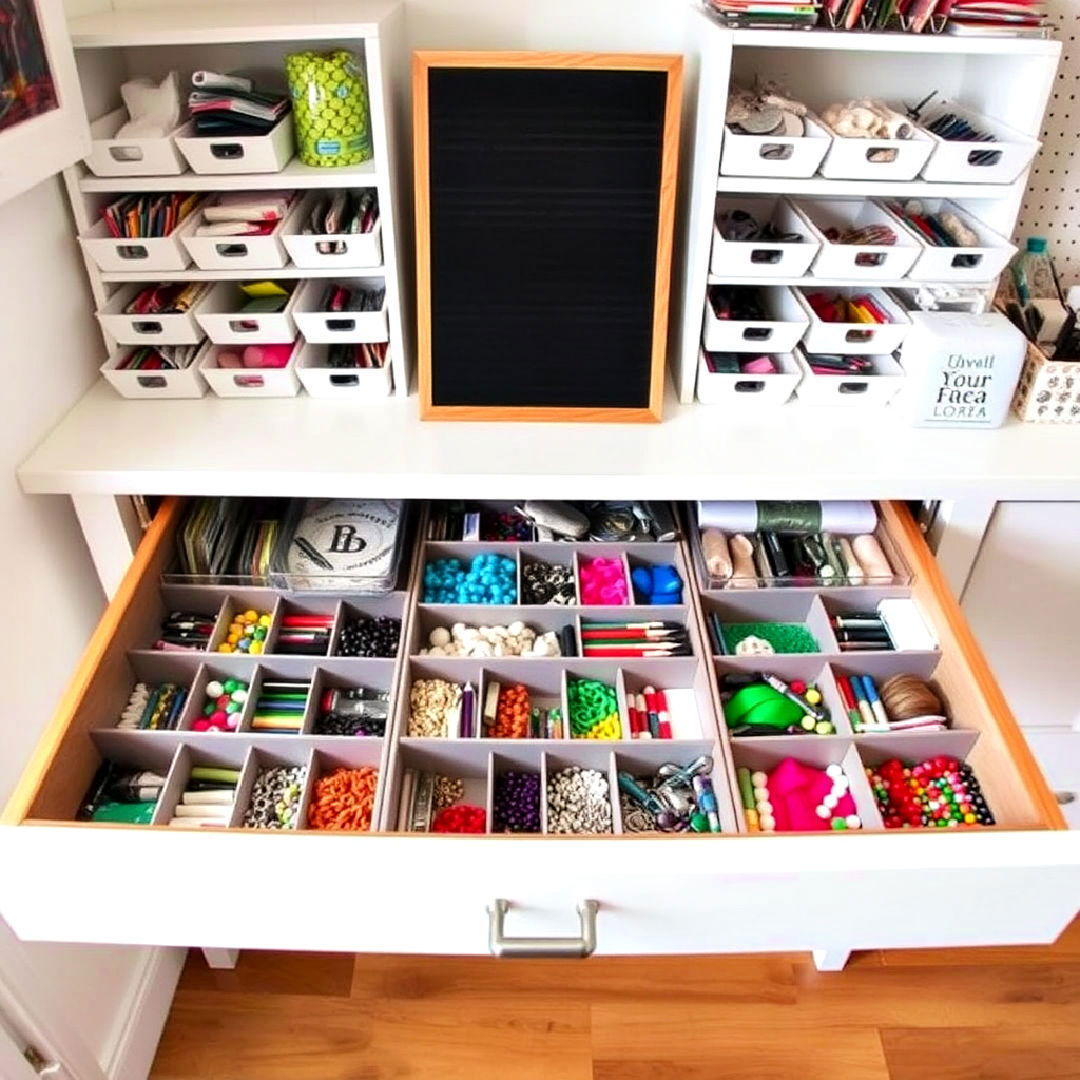
Small art supplies like beads, pencils, or threads can quickly become messy and hard to find. Drawer organizers help keep these items in order, ensuring everything has a designated space. Whether it’s dividers, trays, or boxes, having a system in place makes it easier to locate materials and keeps your workspace tidy and efficient.
19. Install Cork Tiles for a Customizable Pinboard
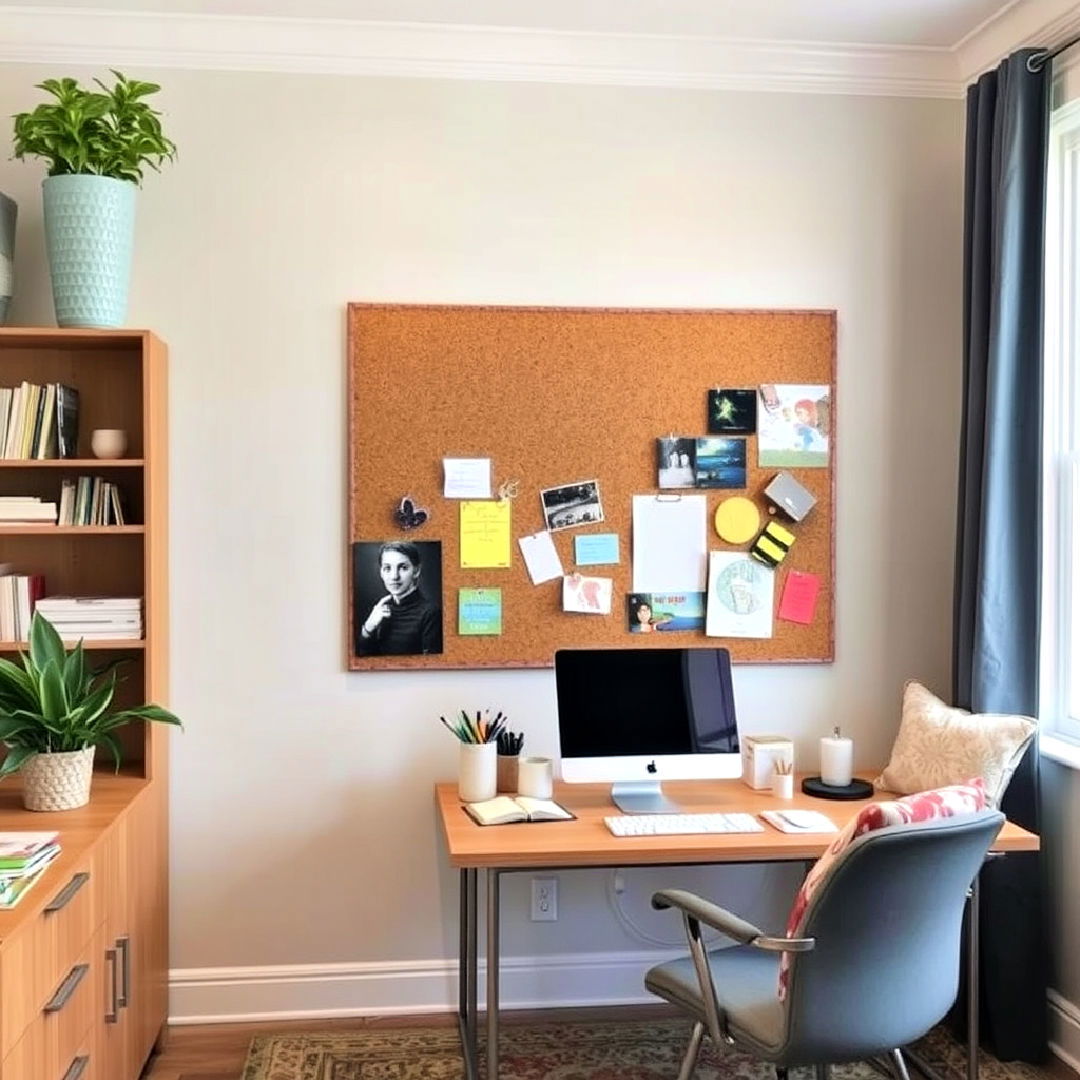
Create a stylish and functional space with our art room ideas for adults guide. Instead of a traditional pinboard, consider covering part of a wall with cork tiles. This allows you to create a large, fully customizable surface for pinning inspiration, works-in-progress, or notes. The flexibility of cork tiles means you can arrange them in any shape or size that suits your room, providing a unique and practical design feature.
20. Use a Lazy Susan for Easy Access to Supplies
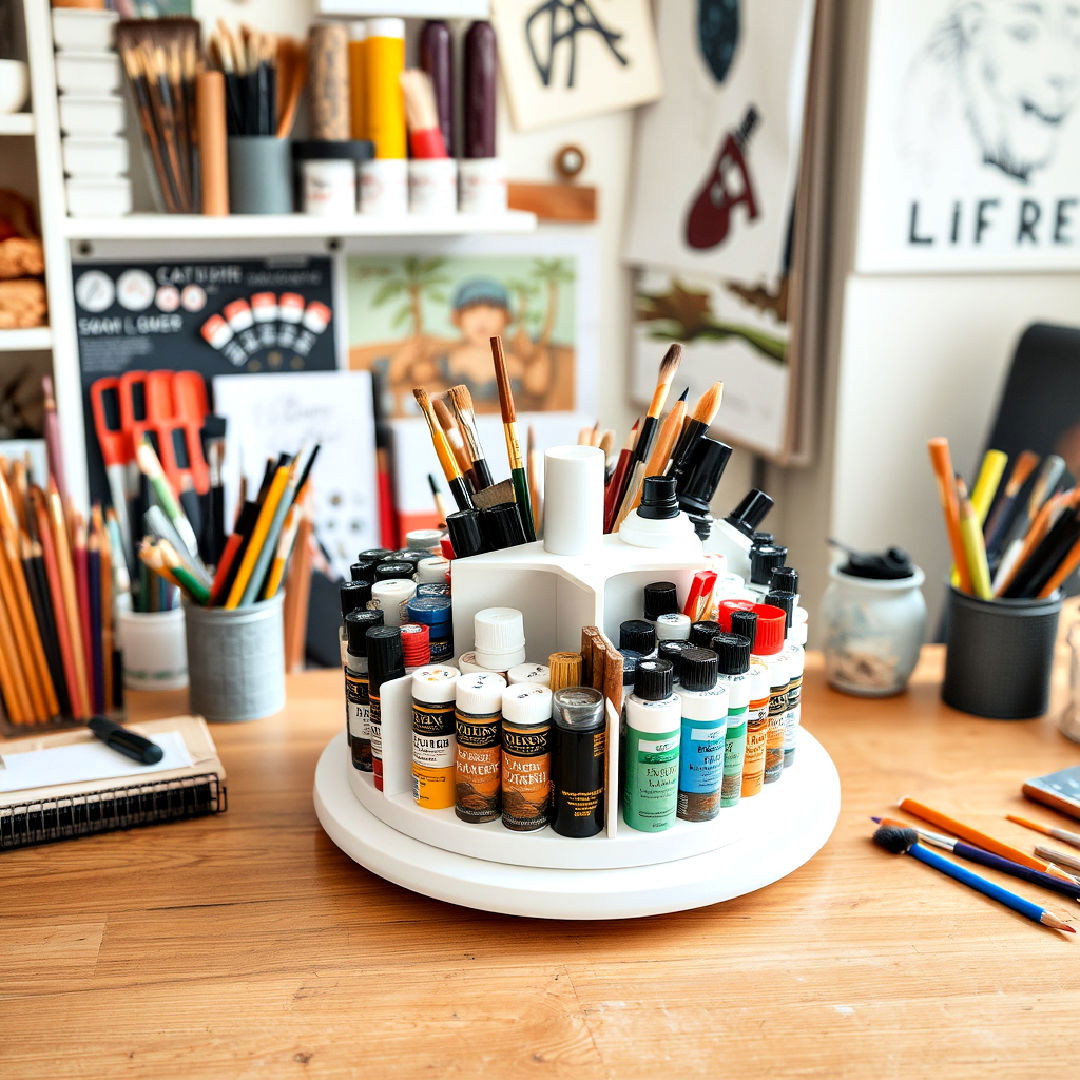
A rotating Lazy Susan placed on your work table can keep commonly used supplies within easy reach. Store paint tubes, brushes, or sketch pencils on it, so you don’t have to constantly get up to find what you need. This simple tool helps streamline your workflow and keeps your tools organized during creative sessions.
21. Incorporate Soundproofing for Concentration
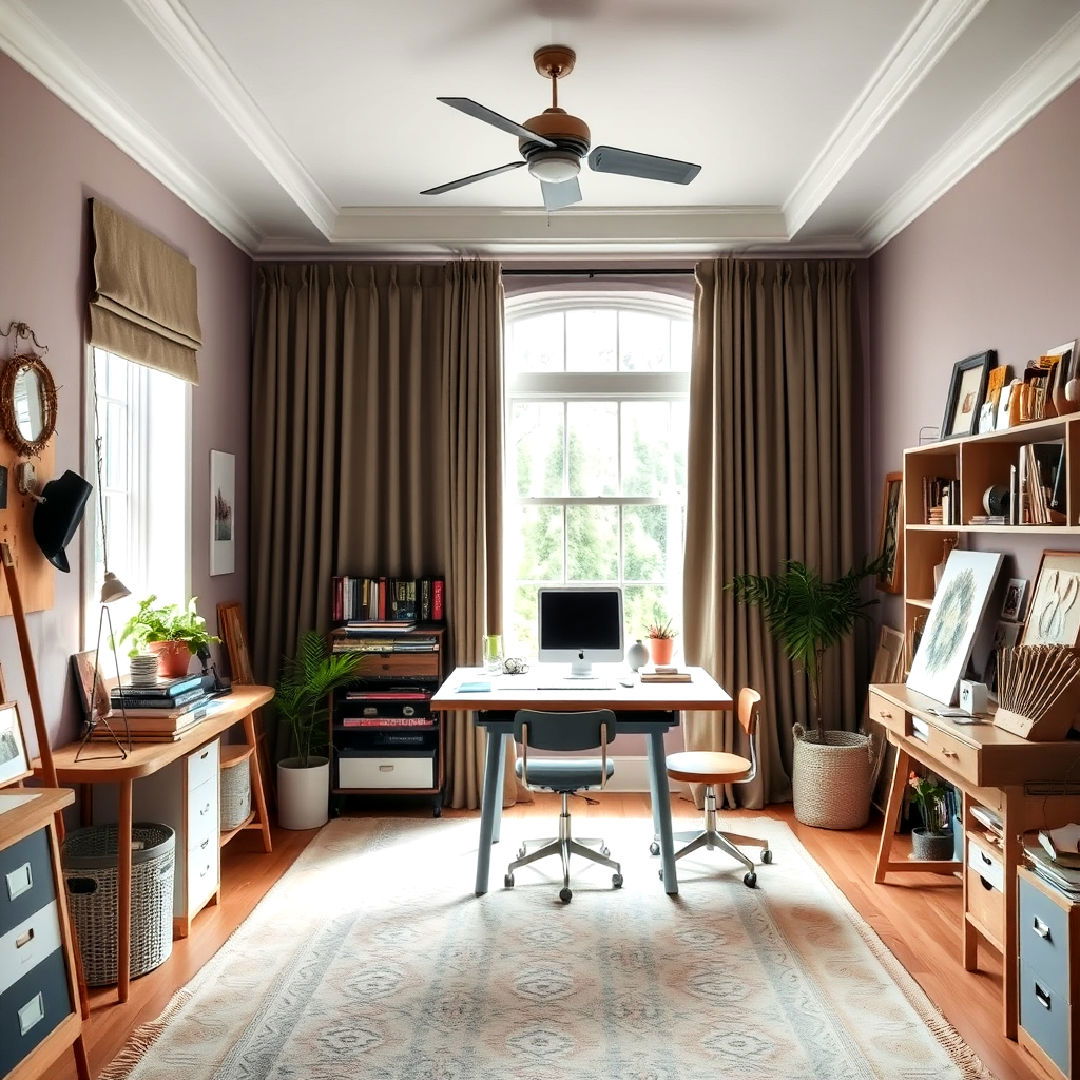
If your art room is in a noisy part of the house, soundproofing materials can help create a quiet, focused environment. Consider adding thick curtains, acoustic panels, or a heavy door to block out external noise. This ensures you can concentrate on your work without distractions, fostering a more productive and serene space for creativity.
22. Design a Color Mixing Station
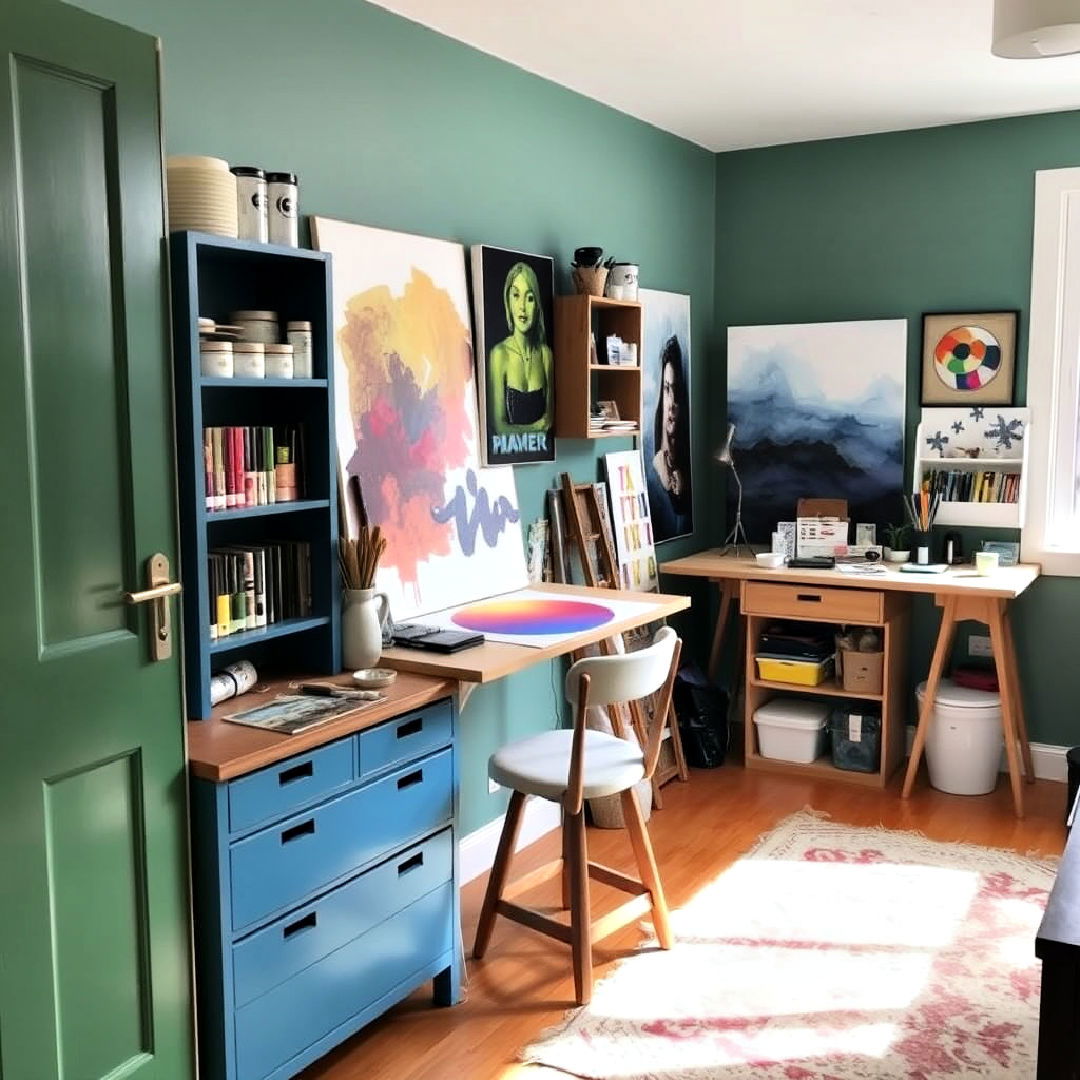
For painters, having a dedicated color mixing station makes it easier to experiment with different hues without making a mess. Install a small counter or use a side table with easy-to-clean surfaces where you can lay out palettes and tools for mixing paints. Having this station separate from your main workspace helps keep your area more organized and efficient.
23. Add Hanging Planters for a Fresh Atmosphere

Bringing nature into your art room can boost creativity and make the space feel more vibrant. Hanging planters are a great way to add greenery without taking up valuable floor or desk space. Choose low-maintenance plants that thrive indoors and require minimal care, such as succulents or ferns, to add a touch of natural beauty to your room.
24. Use Clipboards for Rotating Art Displays
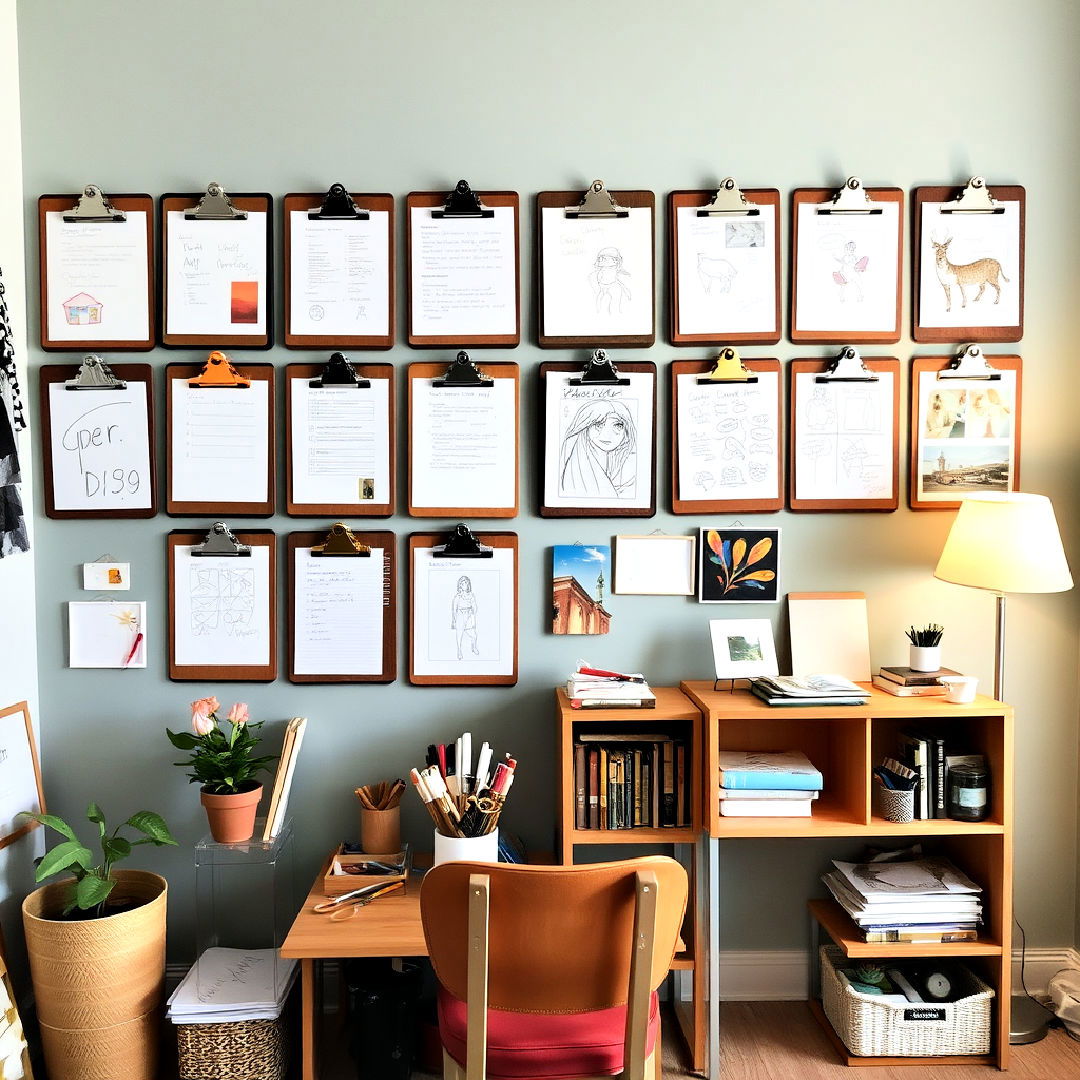
Transform your space with innovative art room design concepts tailored to your needs. Clipboards mounted on the wall offer a fun and flexible way to display rotating artwork. Easily swap out sketches, notes, or photos whenever you want to update the look of your space. This is a great option if you often create new pieces or want to keep inspiration fresh without committing to permanent frames or displays.
25. Install Task Lighting for Precision Work
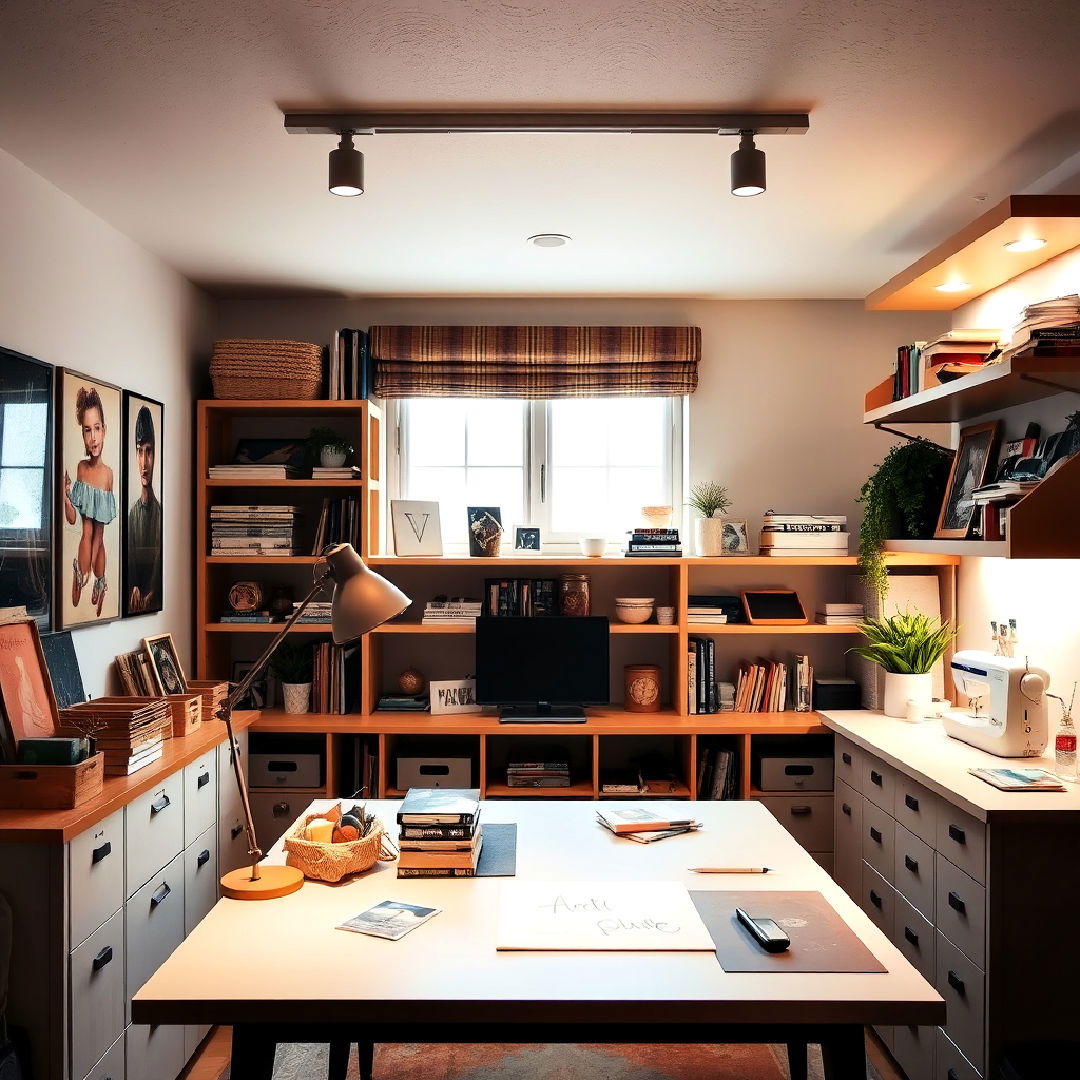
Task lighting, such as adjustable desk lamps or under-shelf lighting, provides focused illumination for detailed work like drawing, sculpting, or sewing. Position these lights to minimize shadows and glare, ensuring that your workspace is well-lit for precision tasks. This setup helps reduce eye strain and improves the overall quality of your creative process.
Conclusion:
Creating your dream art room doesn’t require an unlimited budget—just a bit of creativity and thoughtful planning. By combining practical features like adjustable lighting, pegboards, and versatile storage systems with inspiring elements like dedicated display areas and lush greenery, you can craft a space that’s as functional as it is beautiful. Whether you’re drawn to a minimalist setup or a vibrant, eclectic vibe, these 25 ideas will help you bring your artistic vision to life and keep the inspiration flowing.
Key Points:
- Prioritize Functionality: Incorporate features like adjustable lighting, versatile work tables, and easy-clean flooring to support your creative process efficiently.
- Maximize Organization: Use pegboards, rolling carts, and drawer organizers to keep tools and supplies accessible and clutter-free.
- Enhance Creativity: Add elements like bulletin boards, chalkboard walls, and inspiration displays to spark ideas and encourage experimentation.
- Make the Space Kid-Friendly: Dedicate areas for children’s art supplies with storage systems that are safe and accessible for young creators.
- Incorporate Inspiration and Comfort: Use natural light, comfortable seating, and greenery to create a welcoming and motivating environment.
- Optimize Space: Leverage vertical storage, drying areas, and multipurpose furniture to make the most of small or shared spaces.
What to Do Next:
- Evaluate Your Space: Assess your available area and define the primary purpose of your art room—whether it’s for painting, crafting, or family use.
- Plan Your Budget: Determine how much you’re willing to spend and identify budget-friendly alternatives for key elements.
- Create a Layout: Sketch a layout that includes essential zones, like a work area, storage, and display space.
- Gather Materials: Shop for the necessary supplies, including organizers, furniture, and decor, prioritizing multifunctional items.
- Start Small: Begin with high-impact changes, like improving lighting or organizing supplies, and build from there.
- Personalize the Space: Add unique touches that reflect your style, such as rotating art displays or a dedicated inspiration board.

